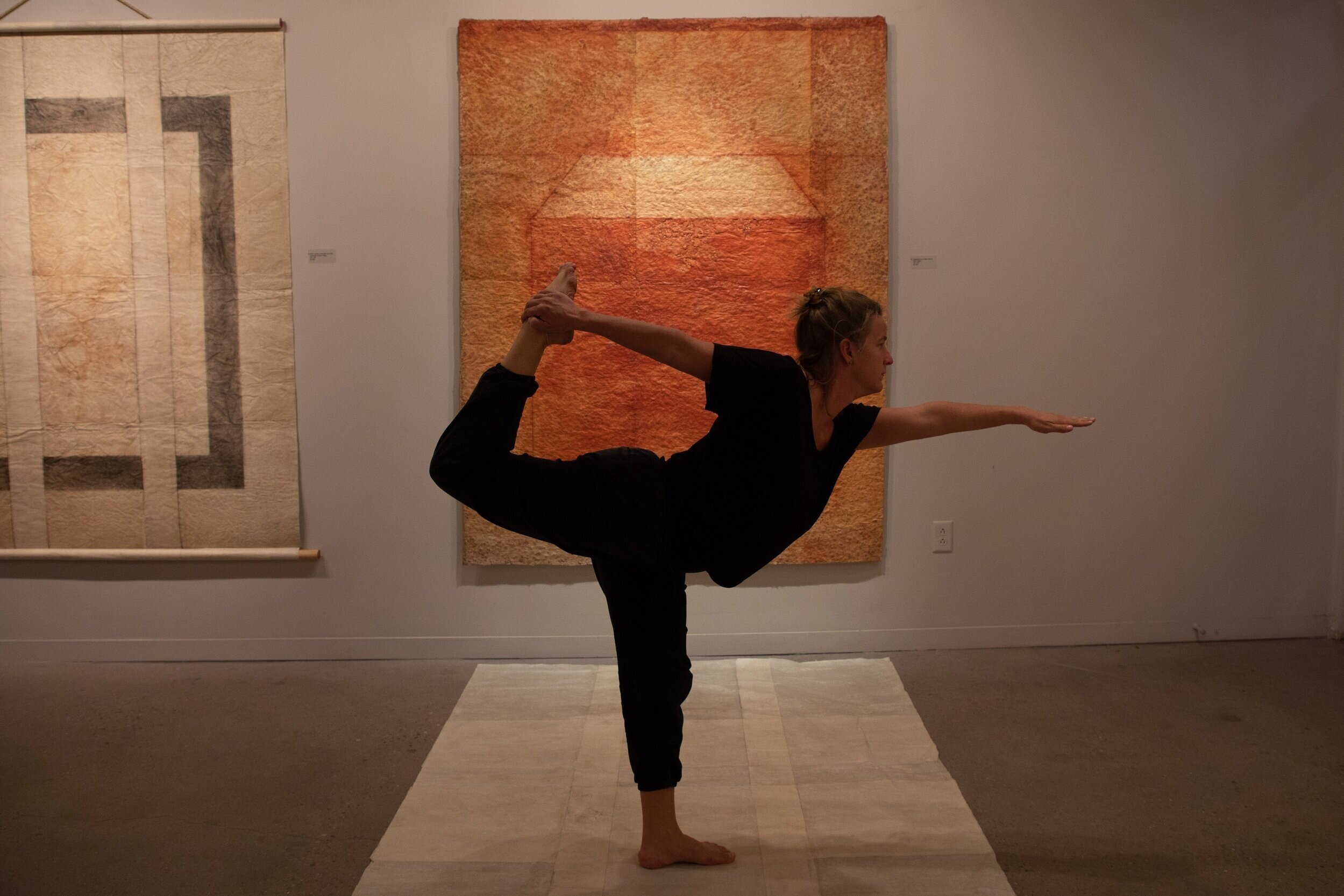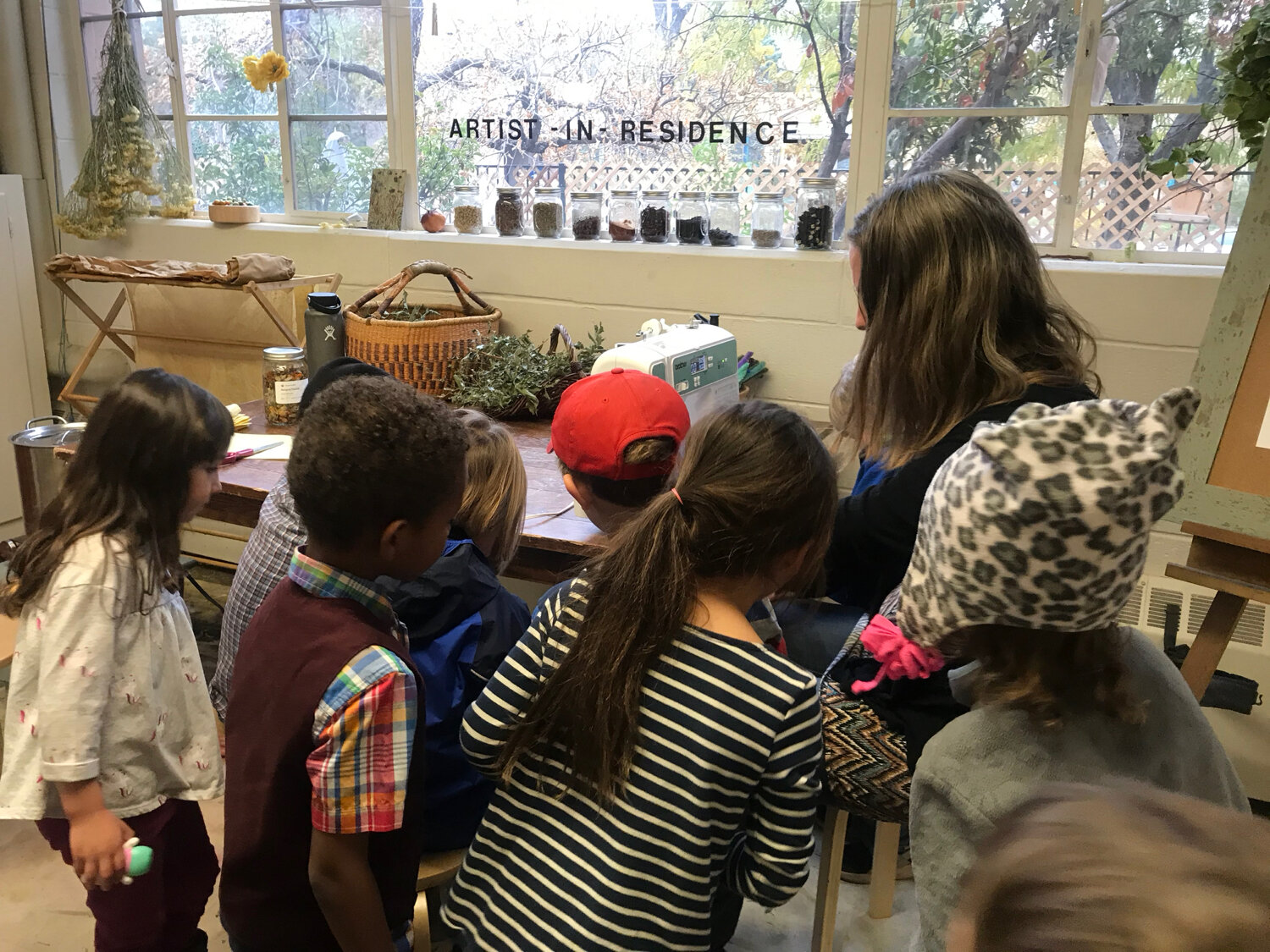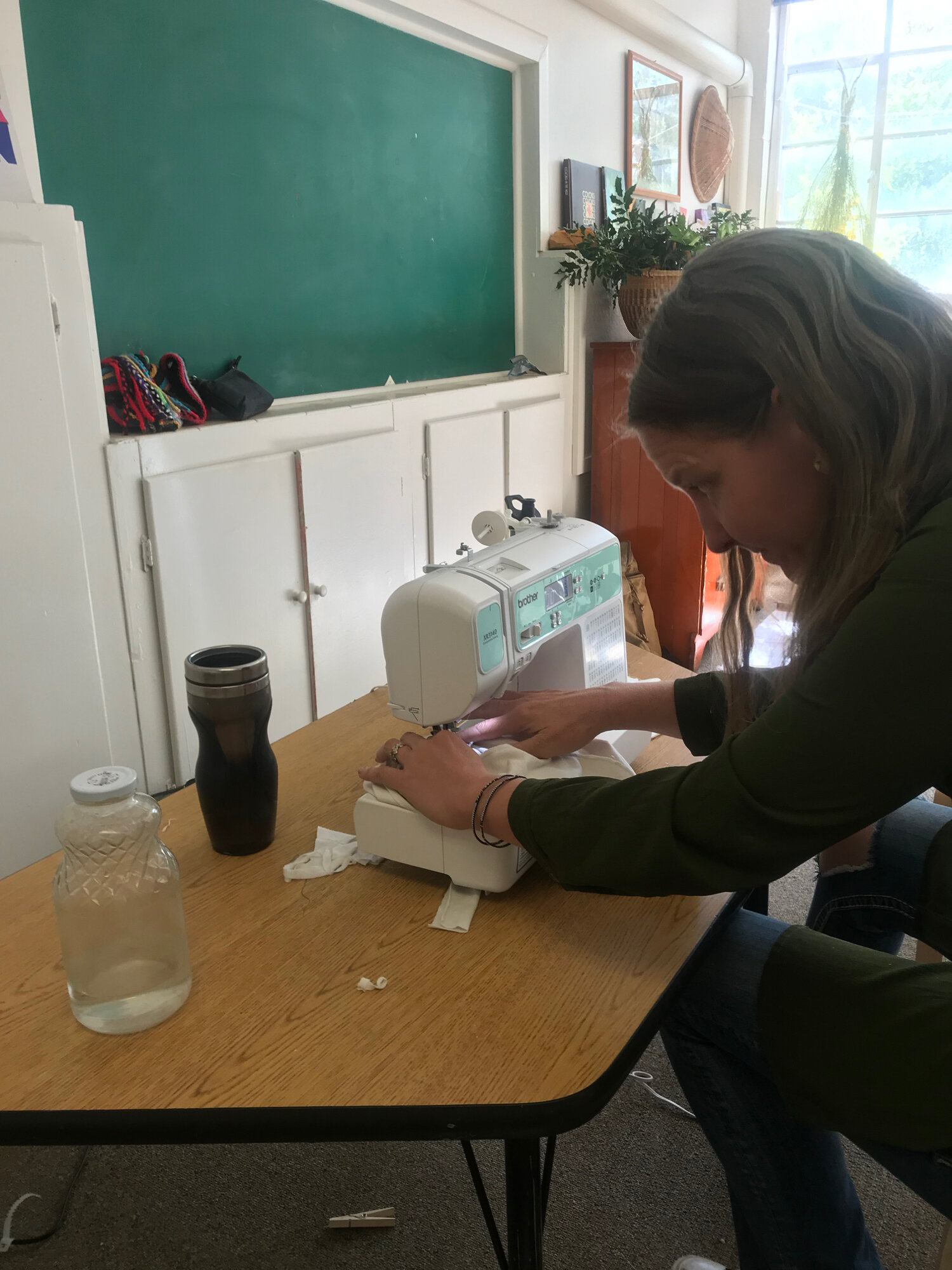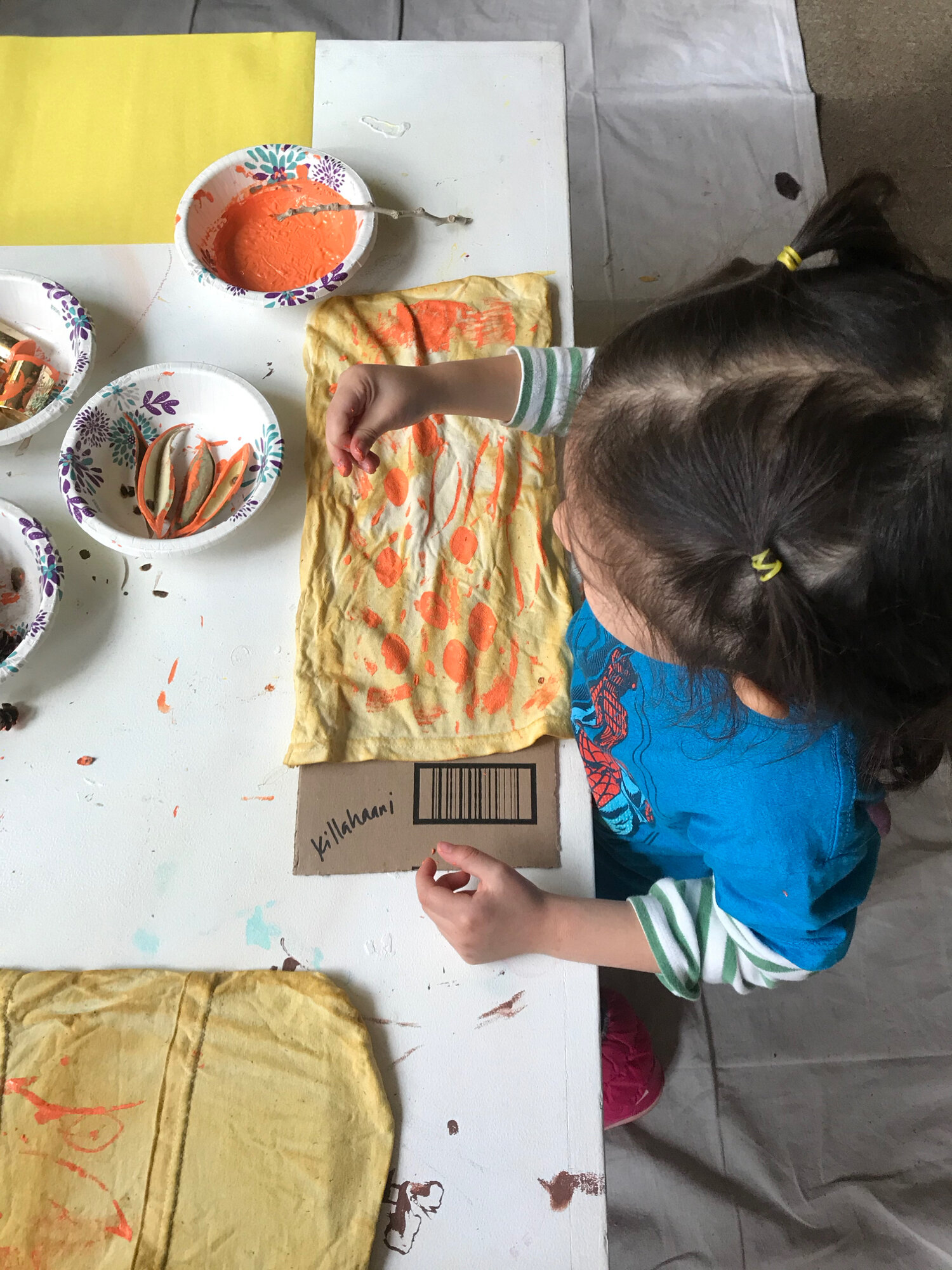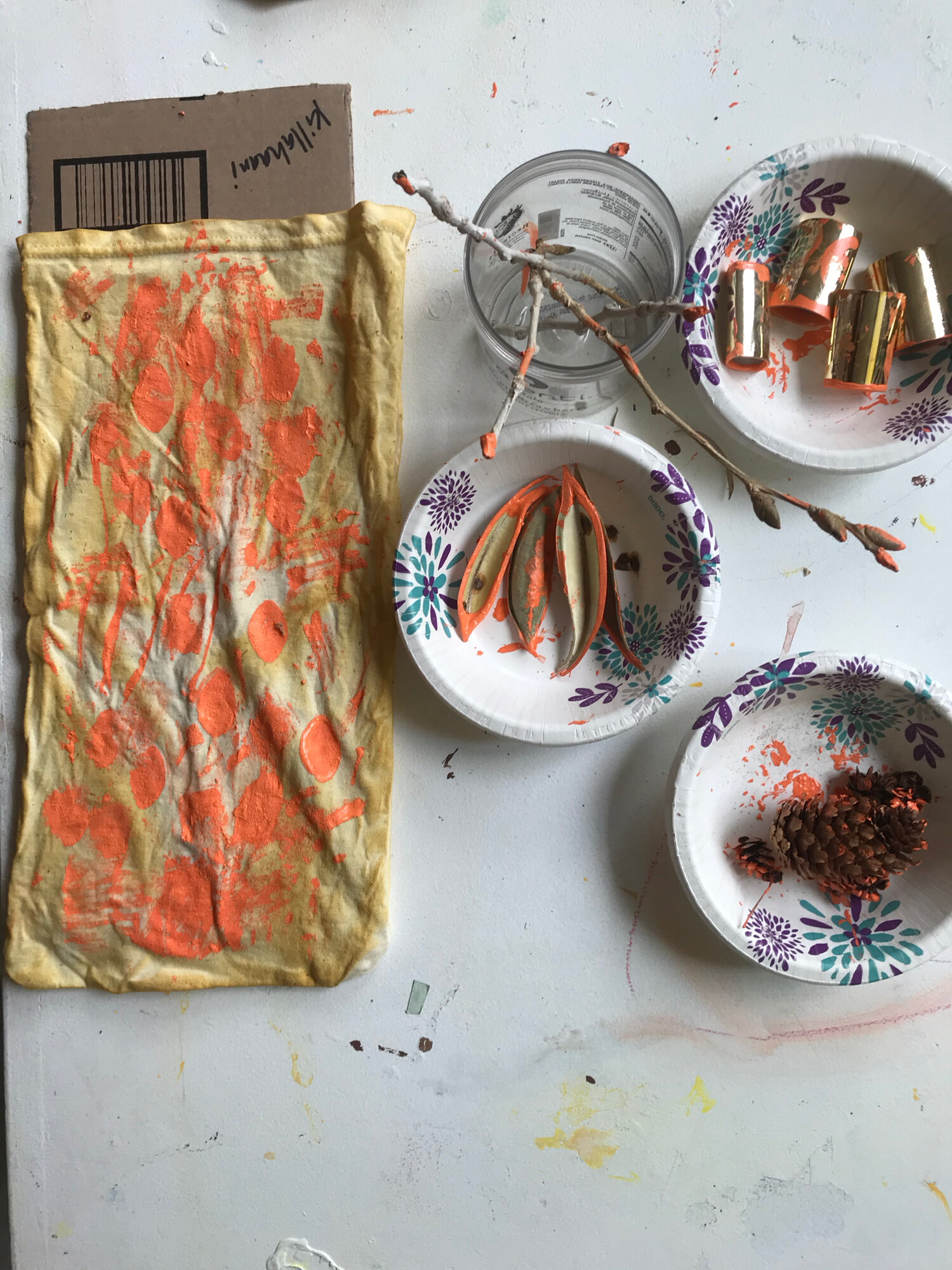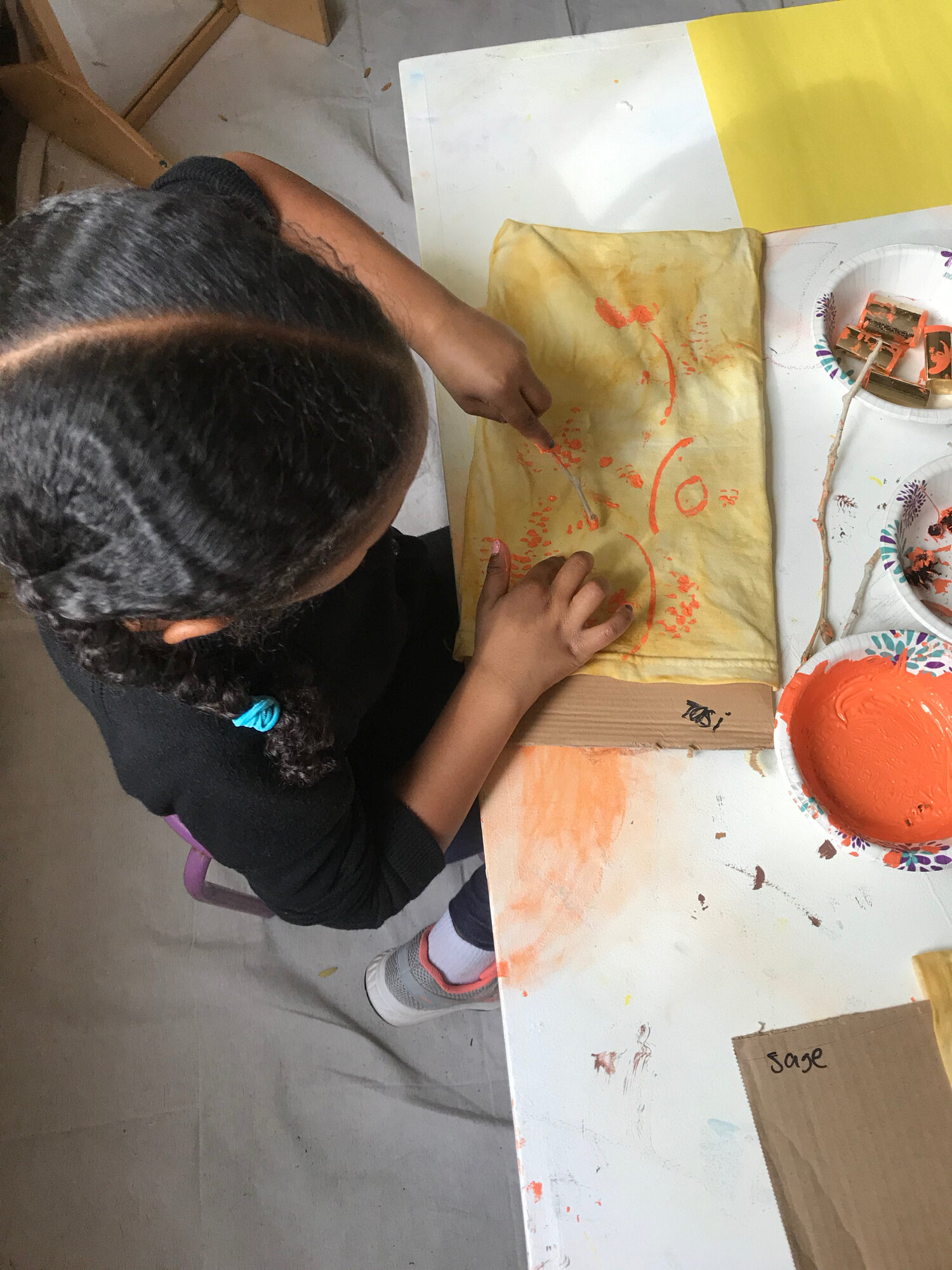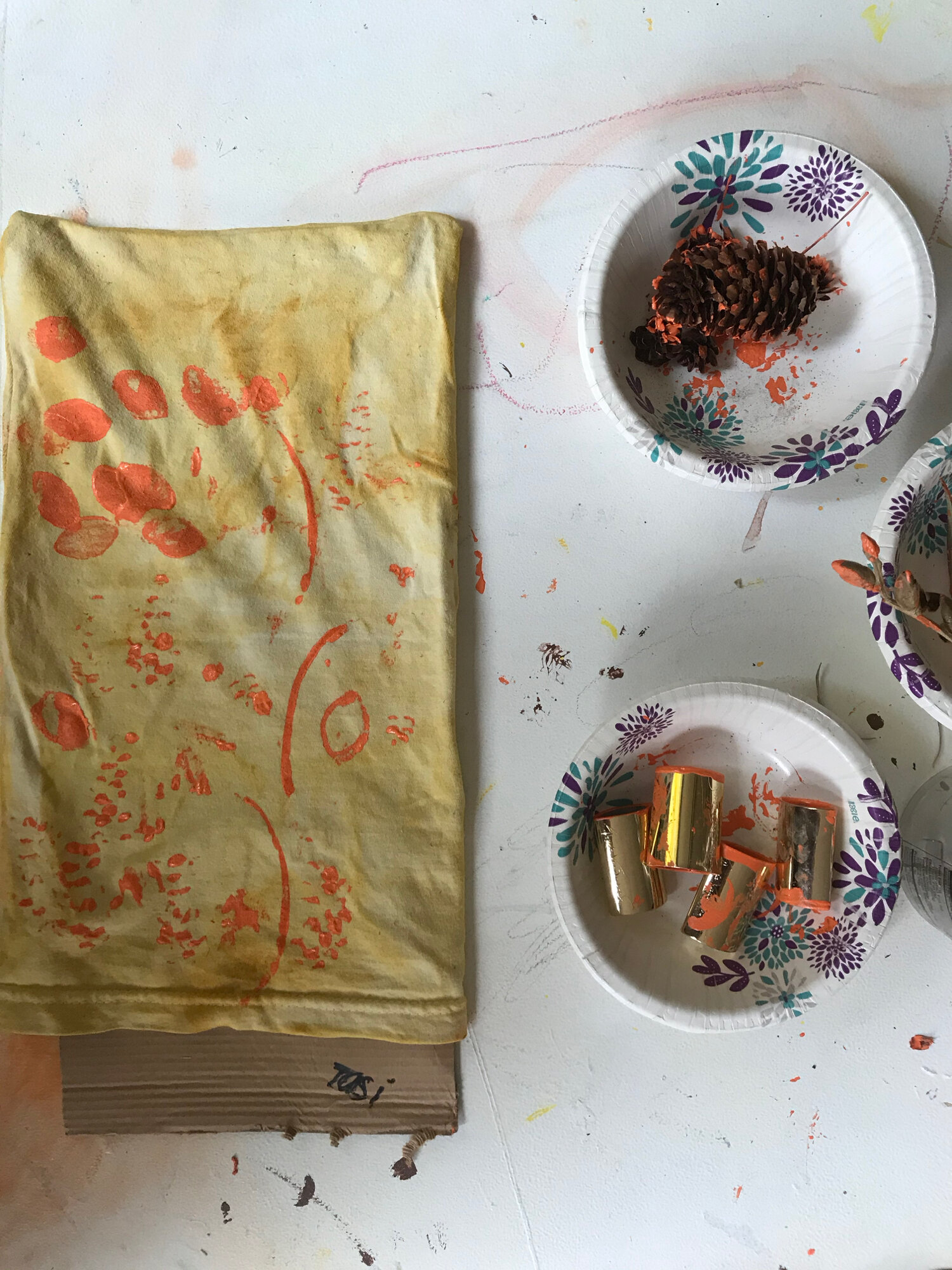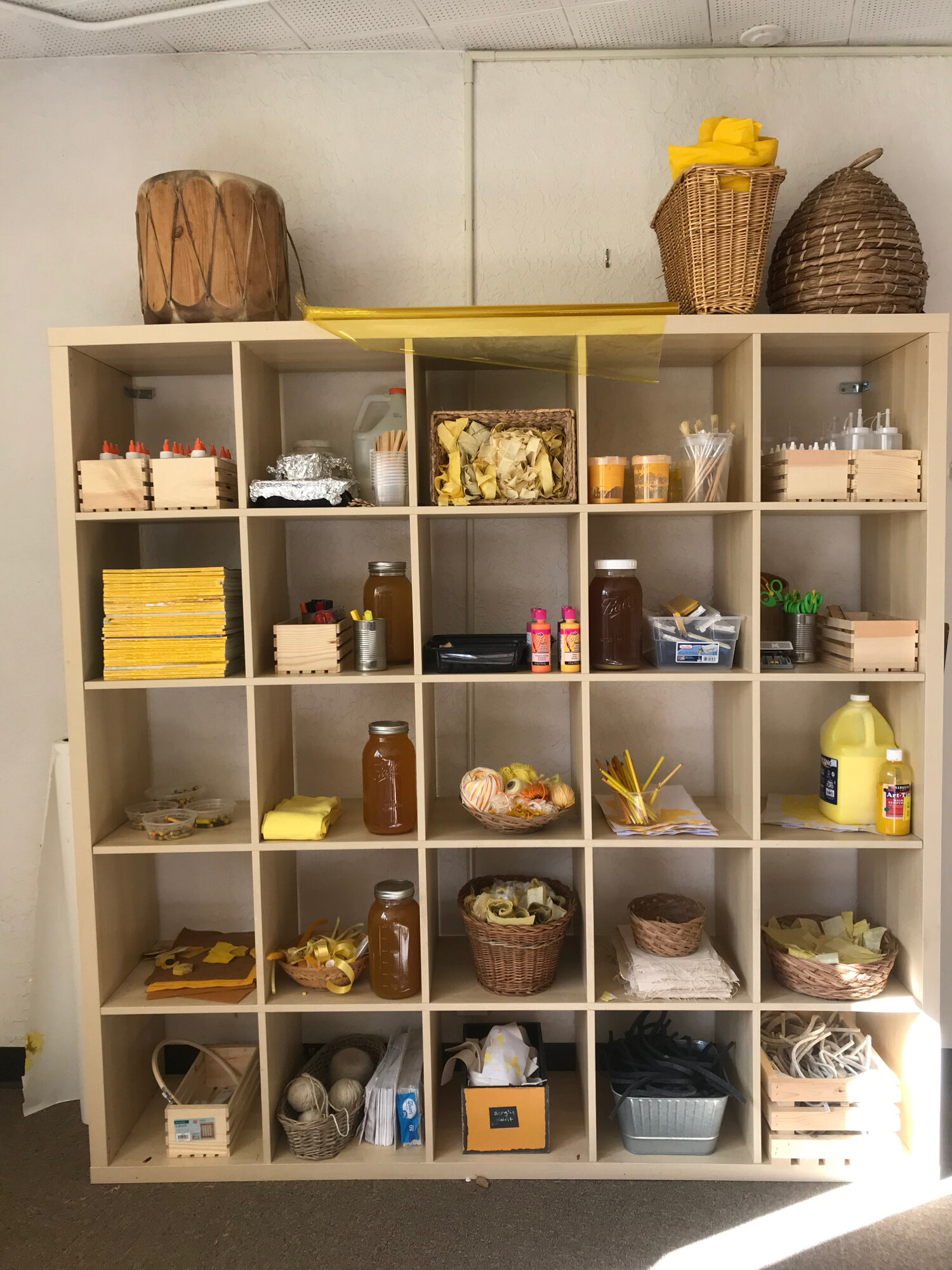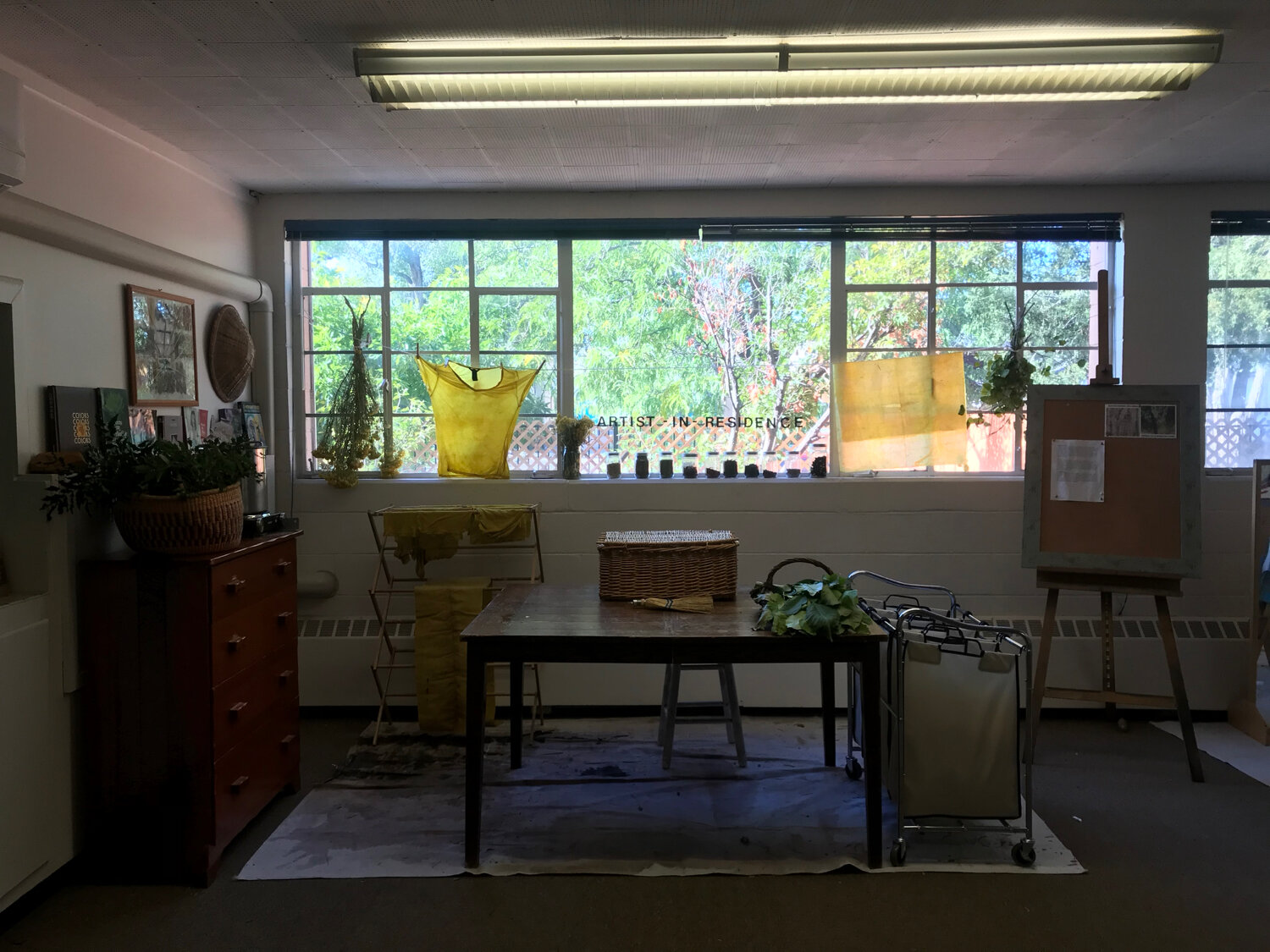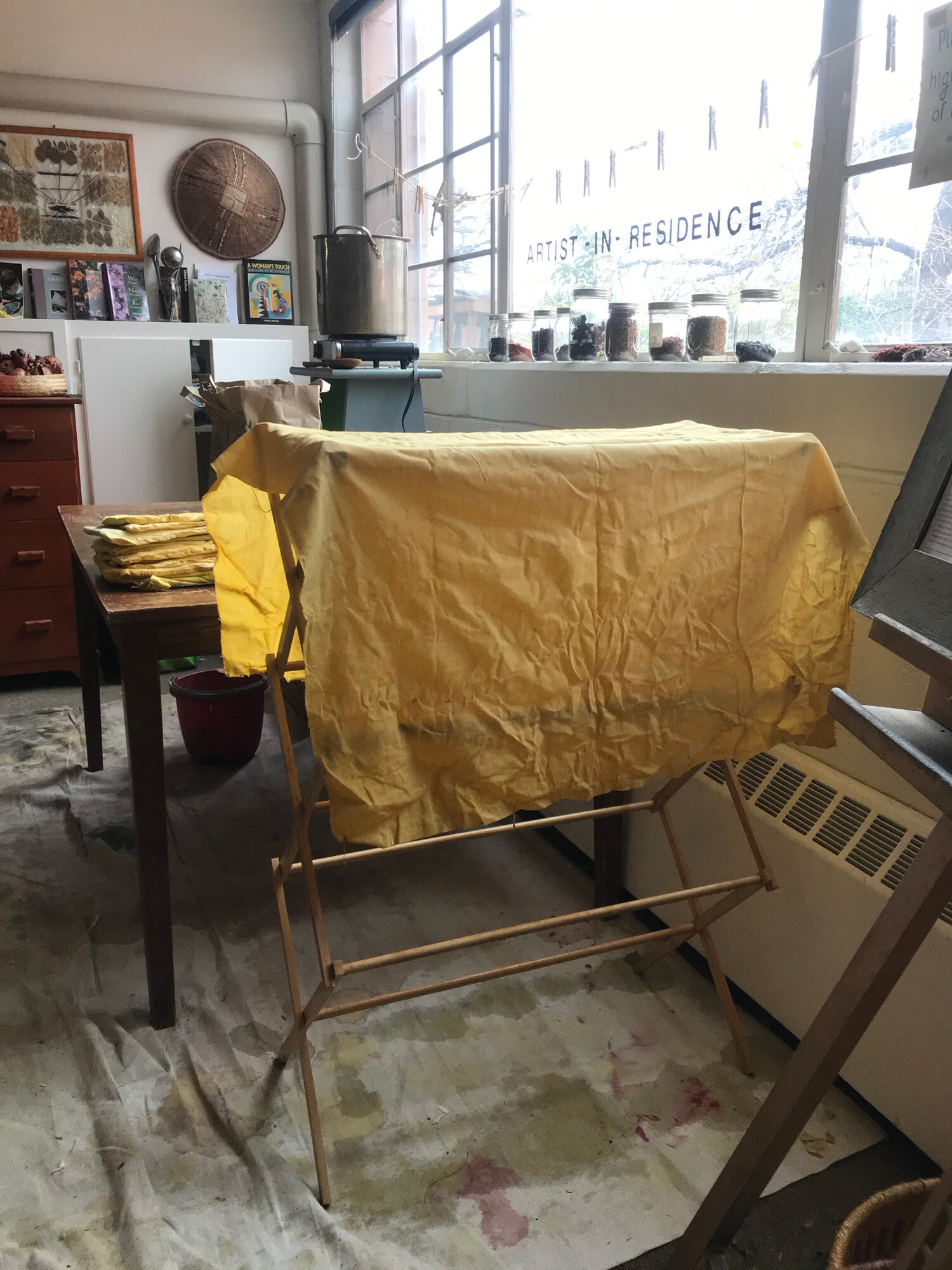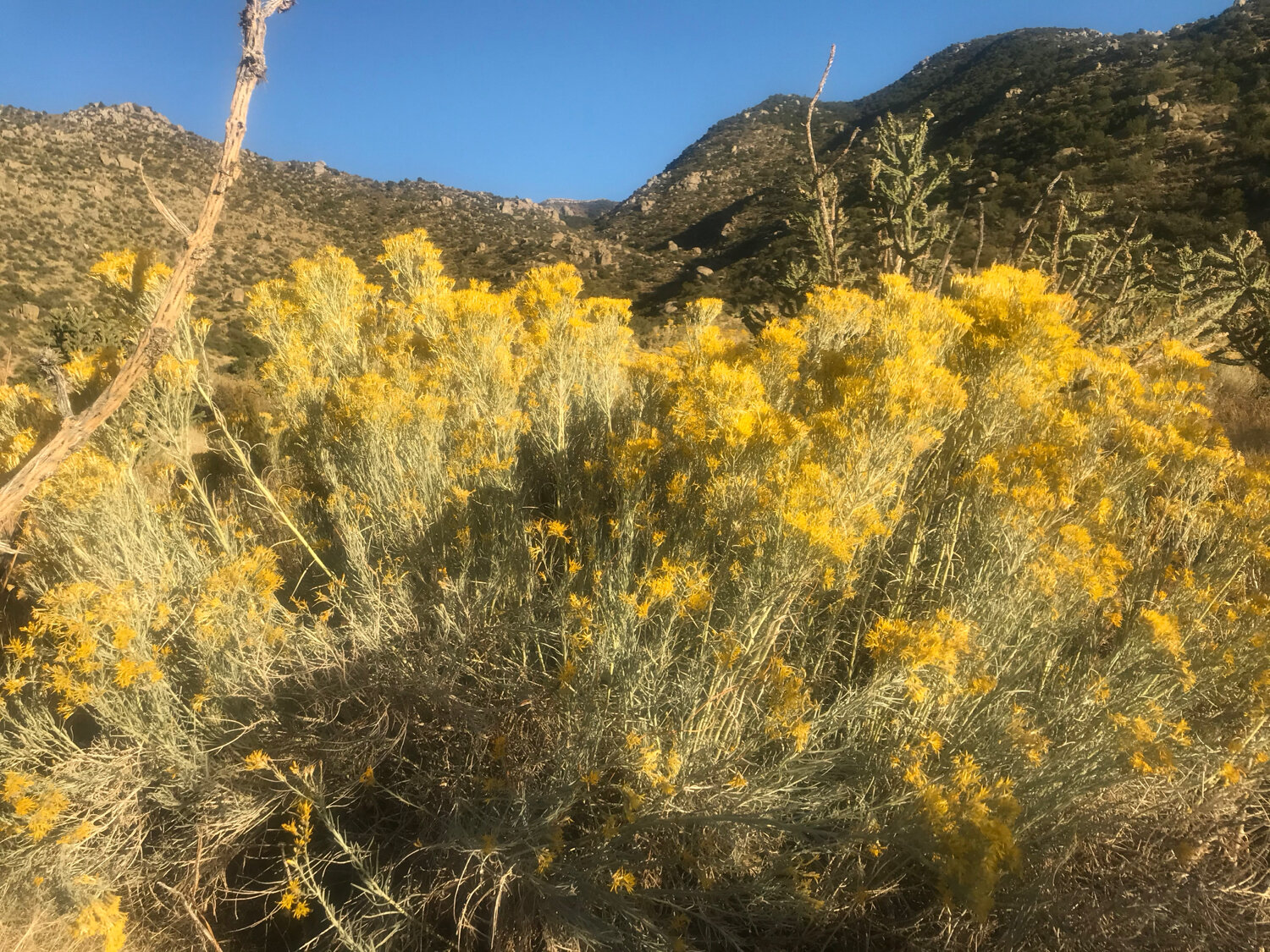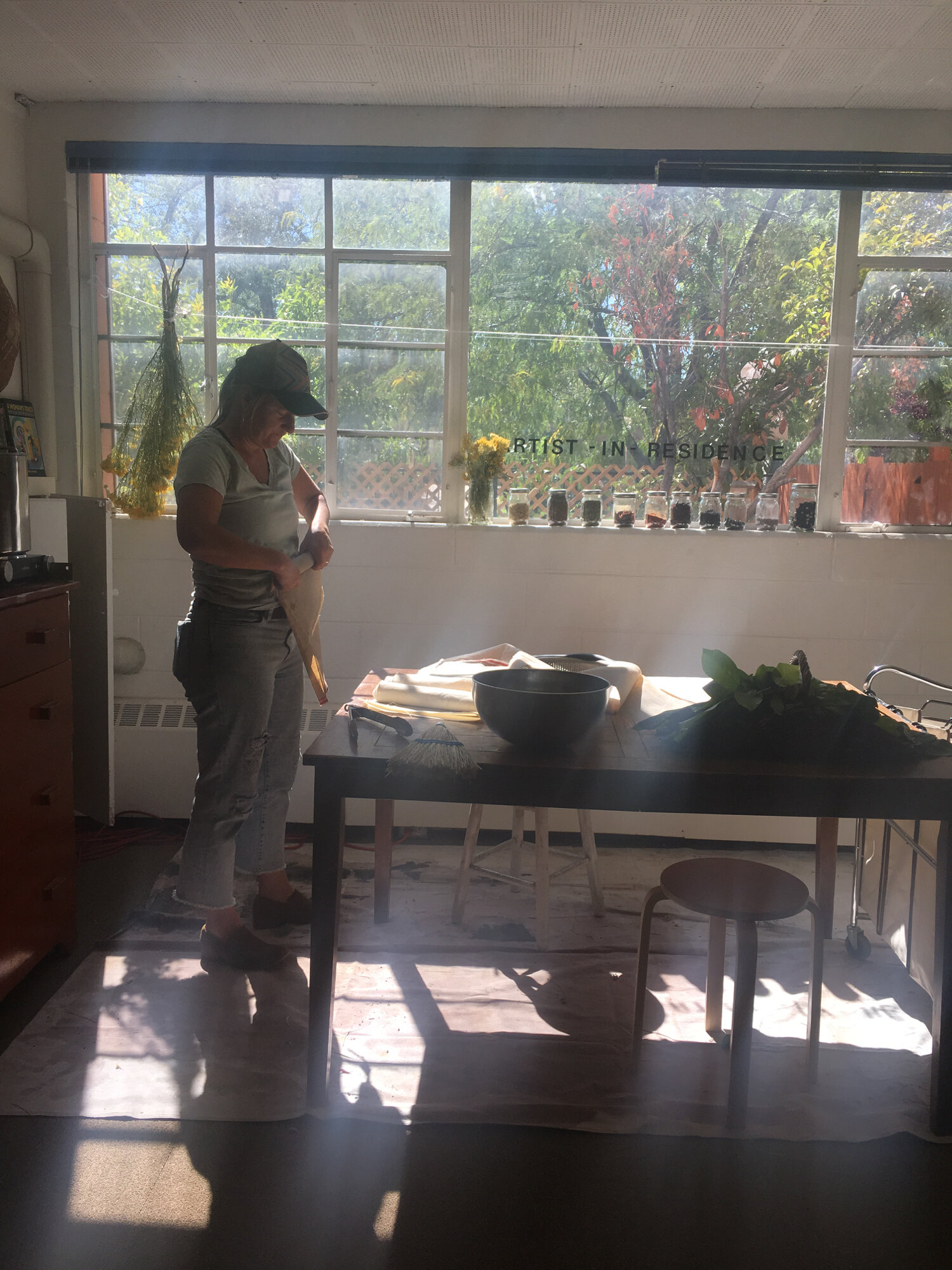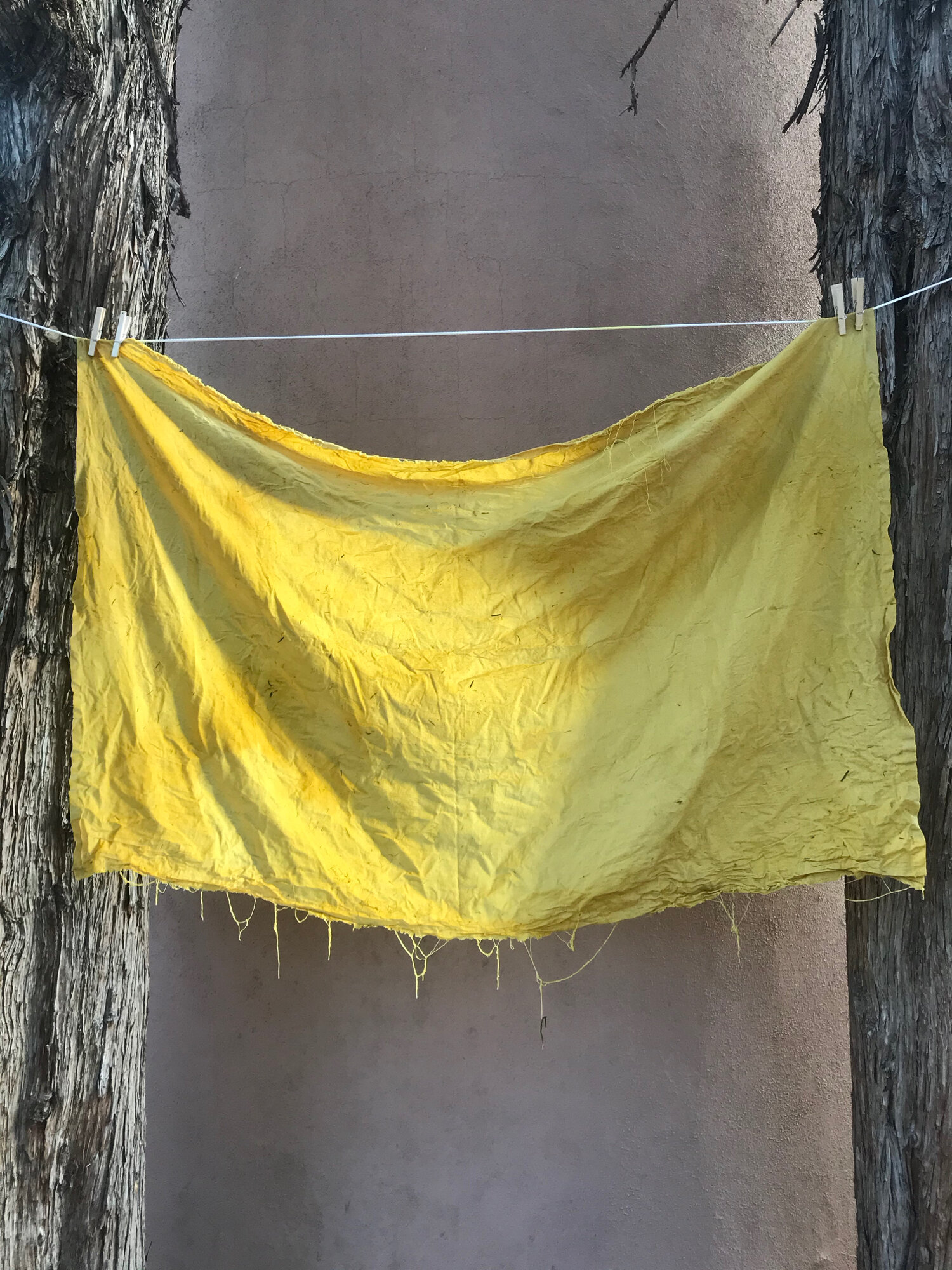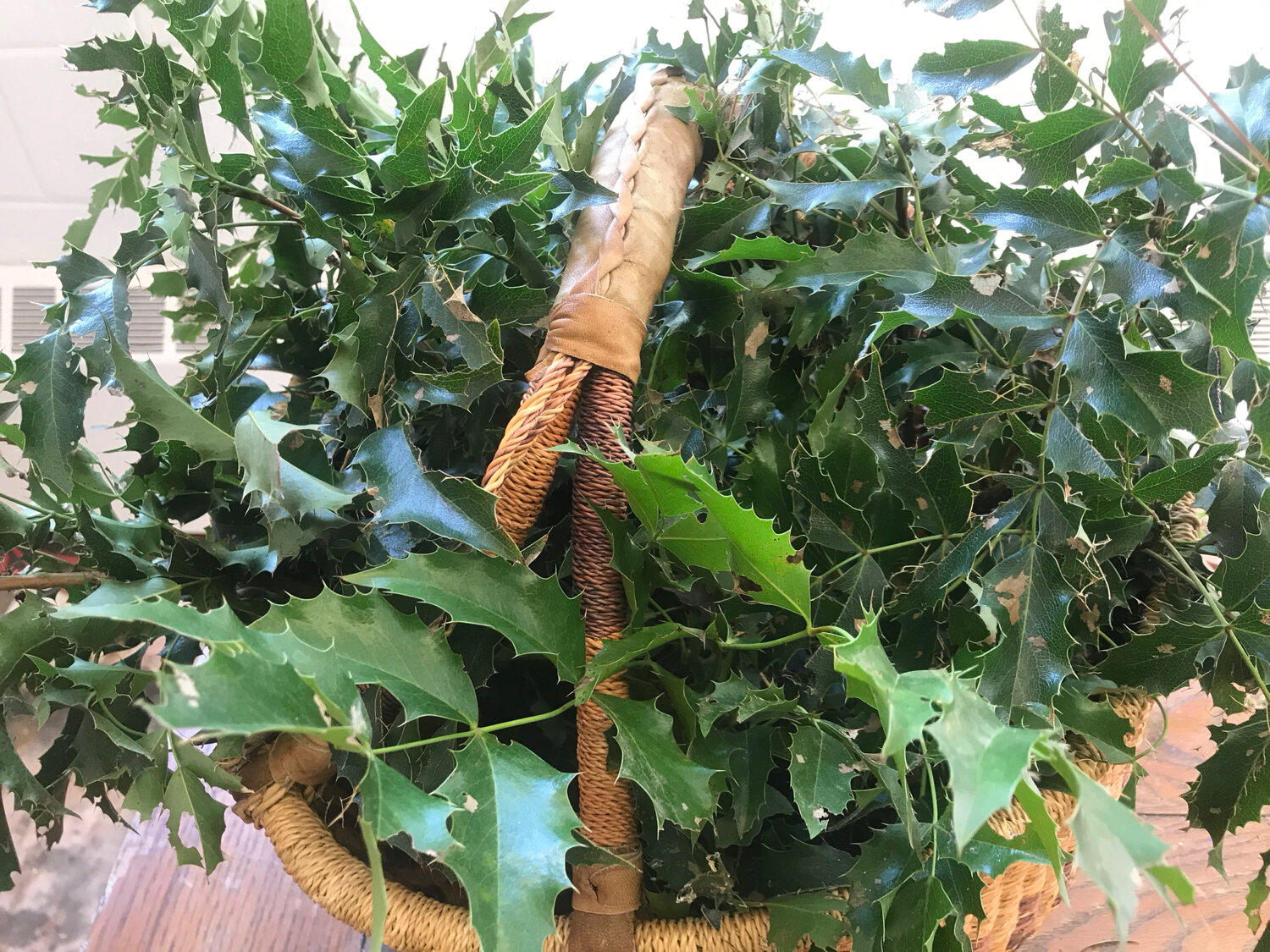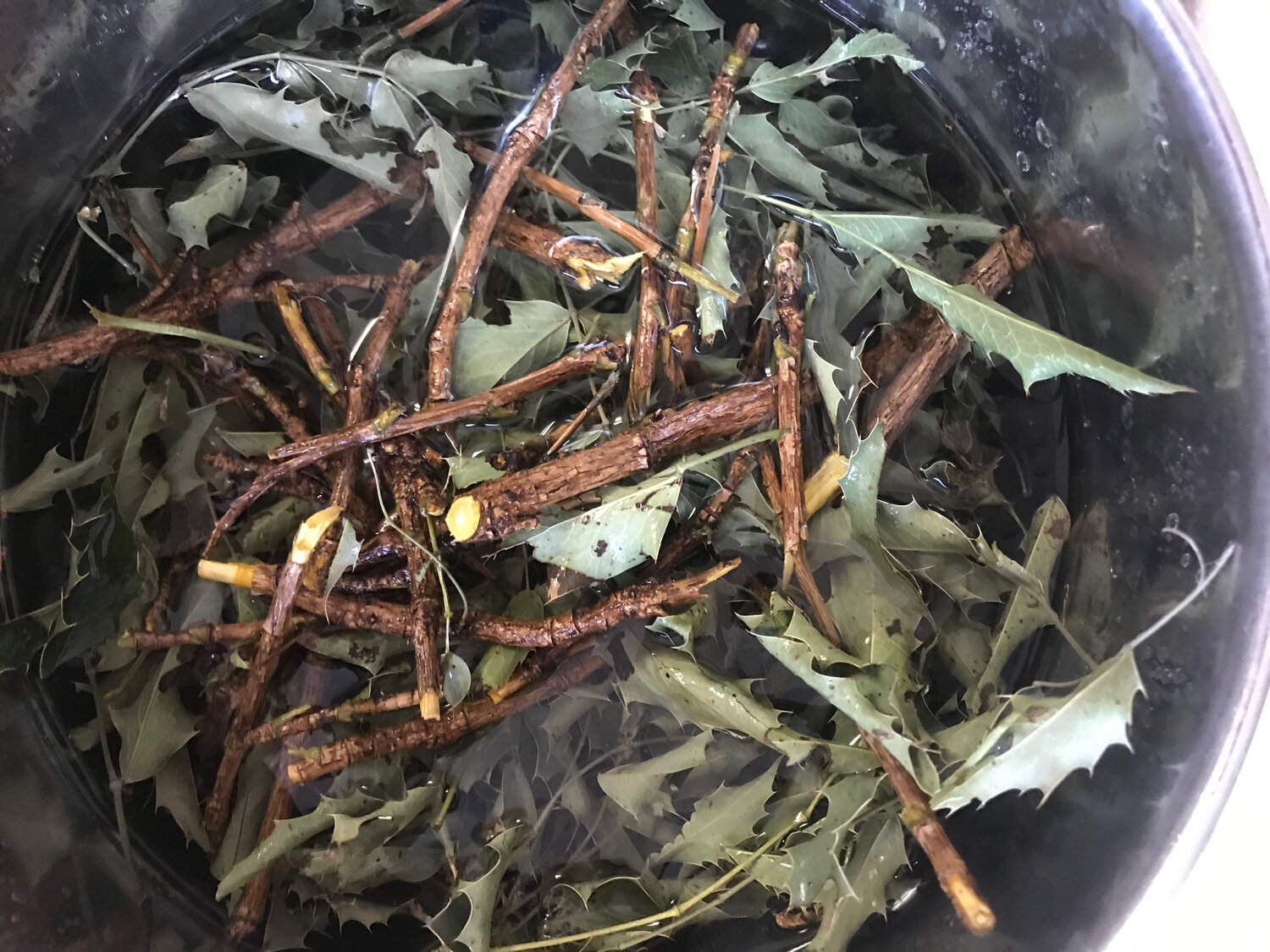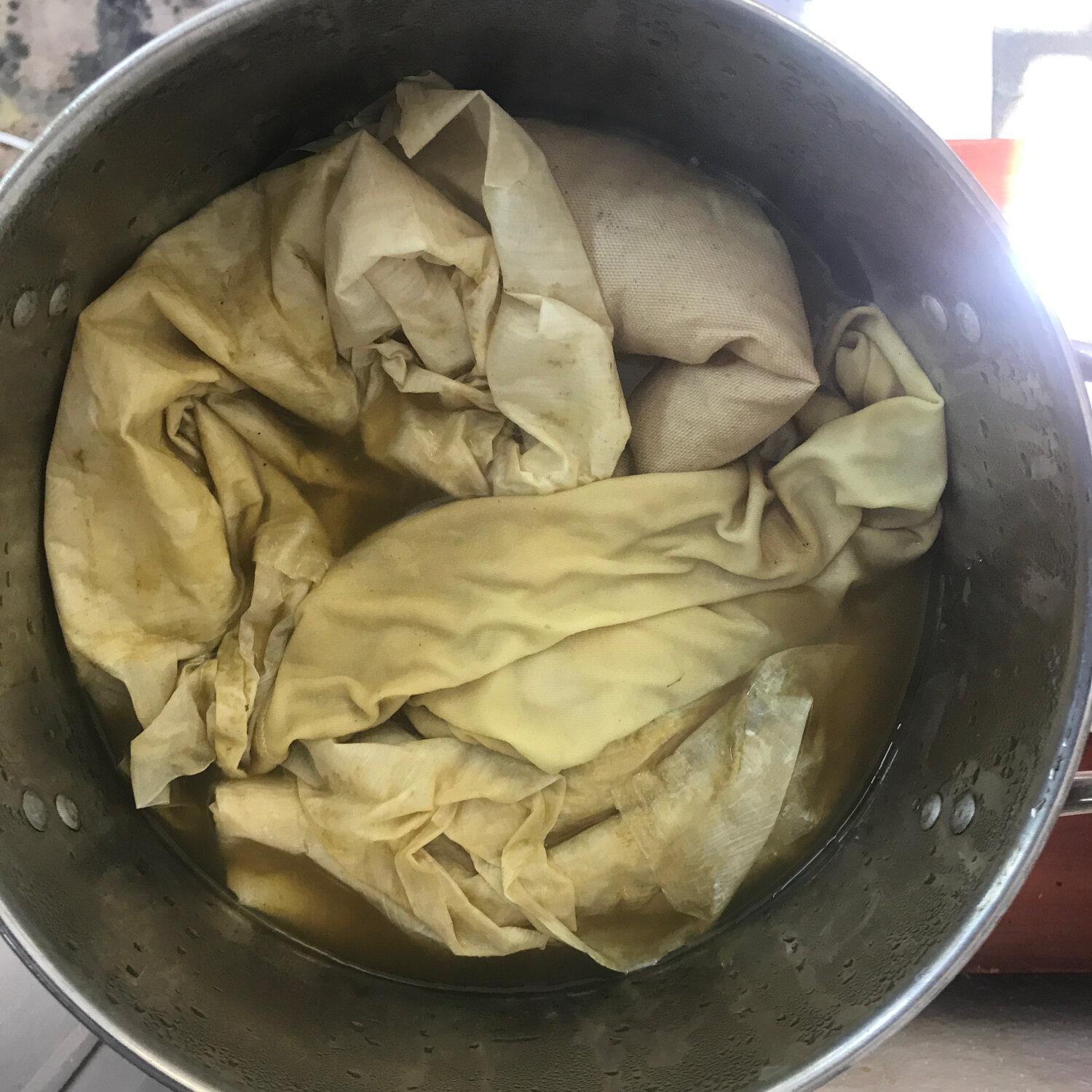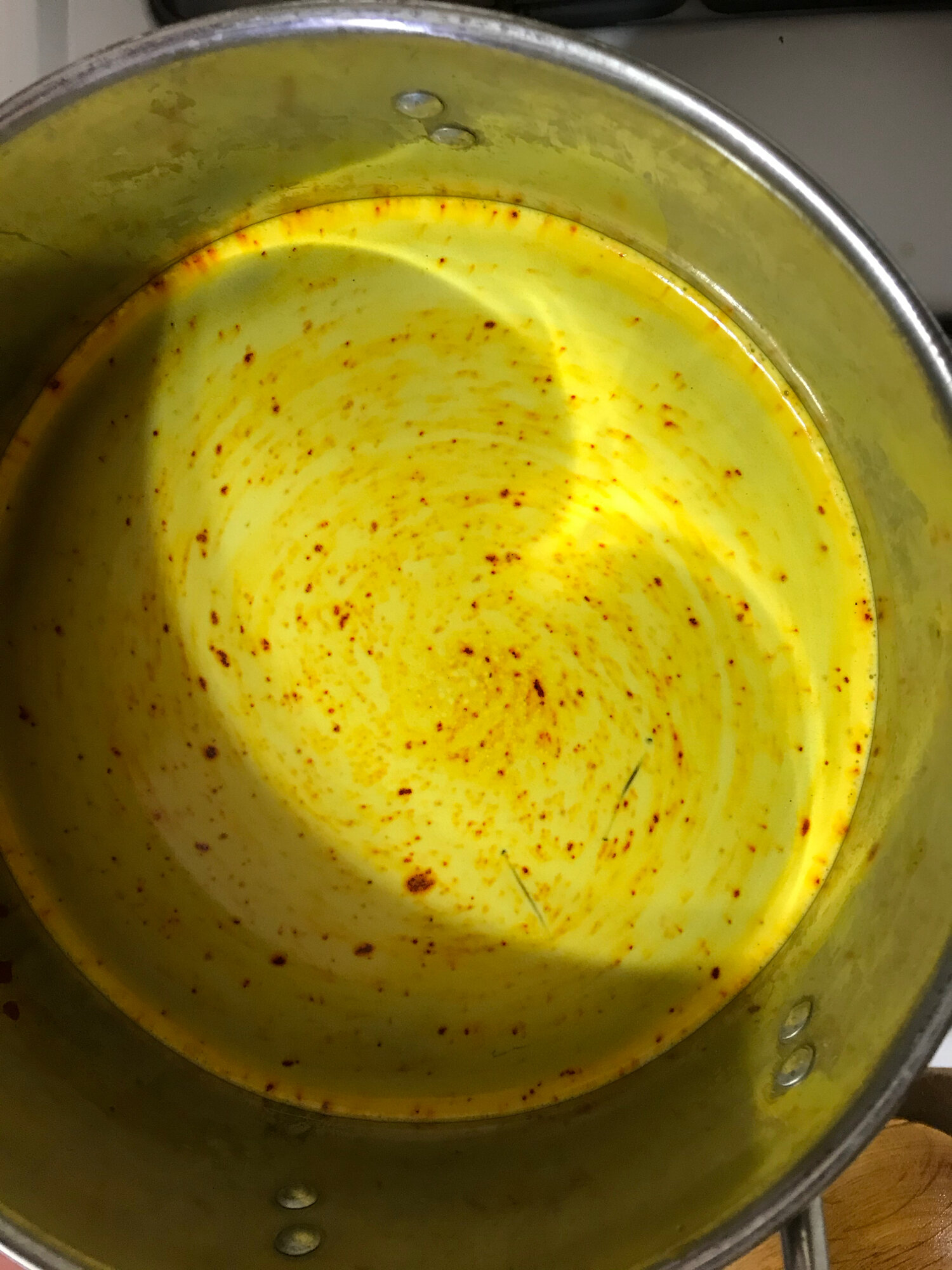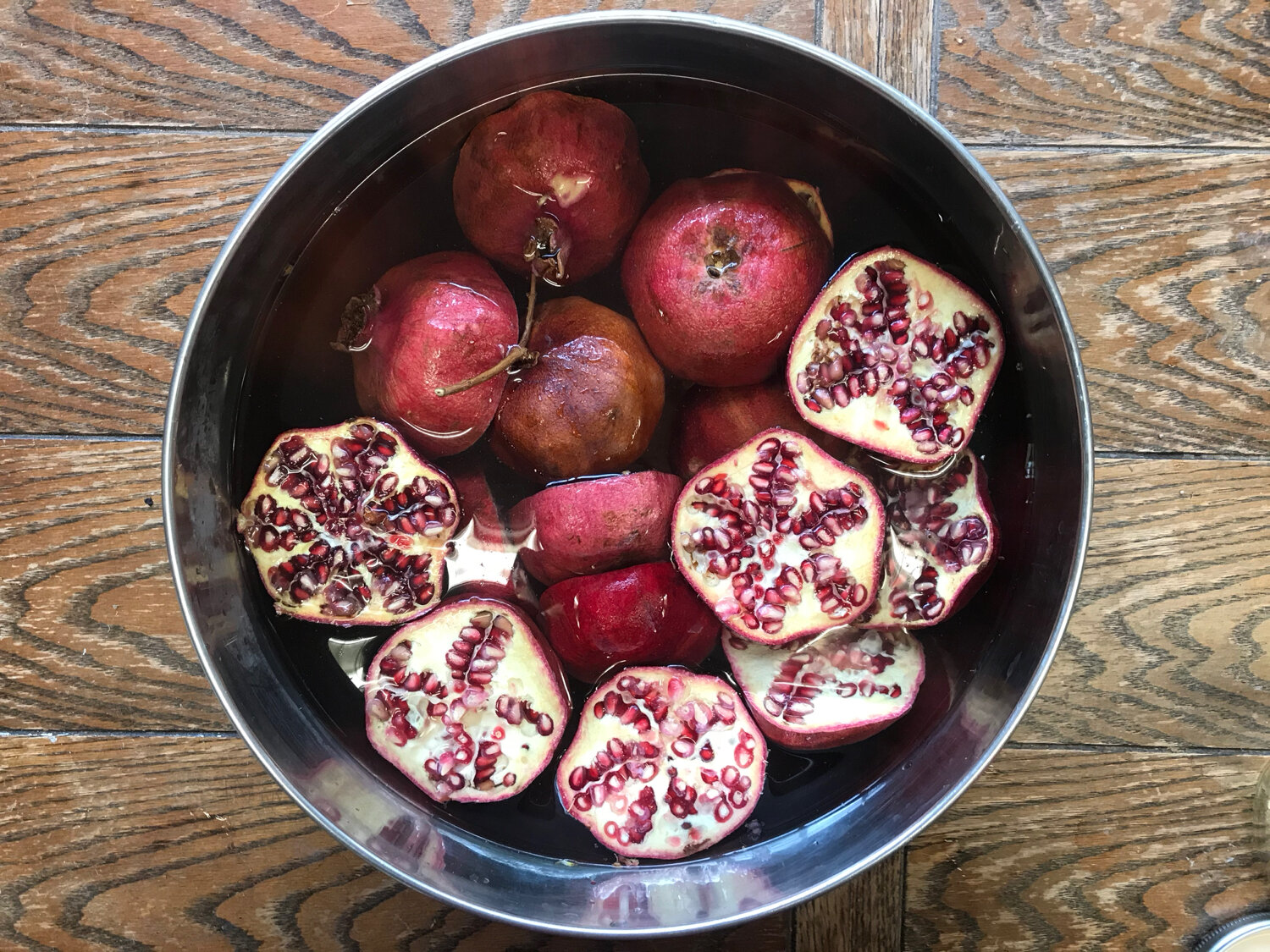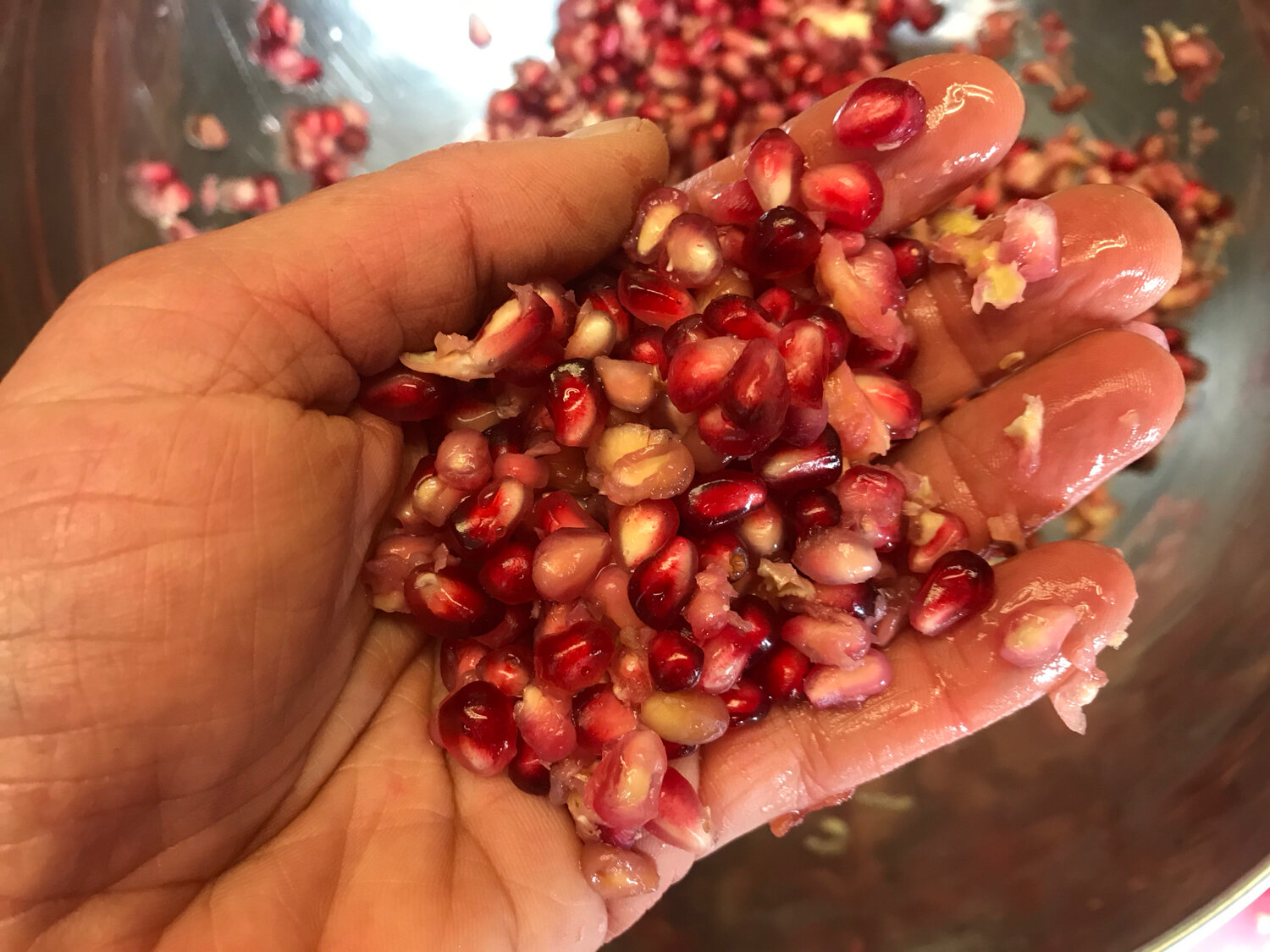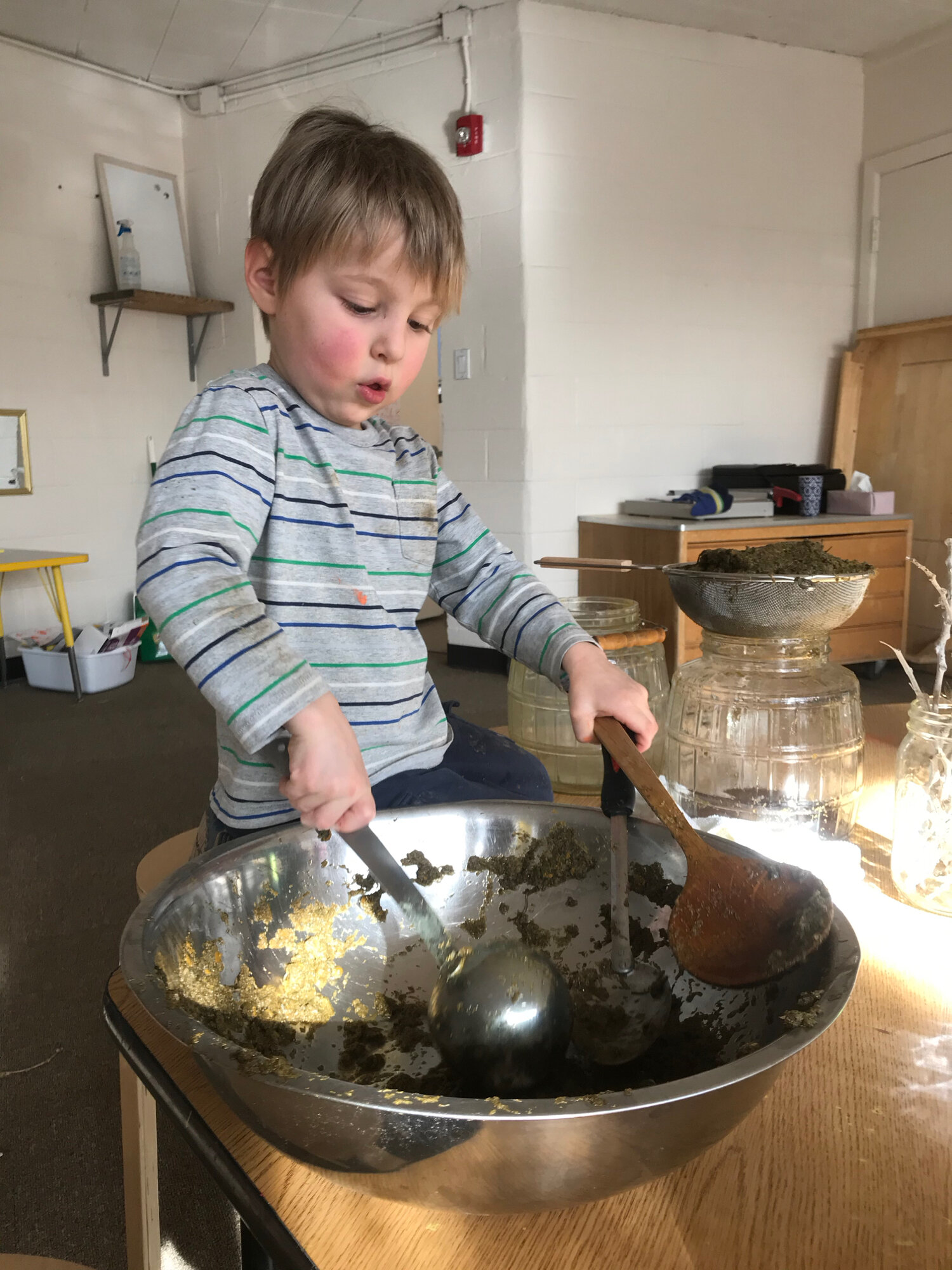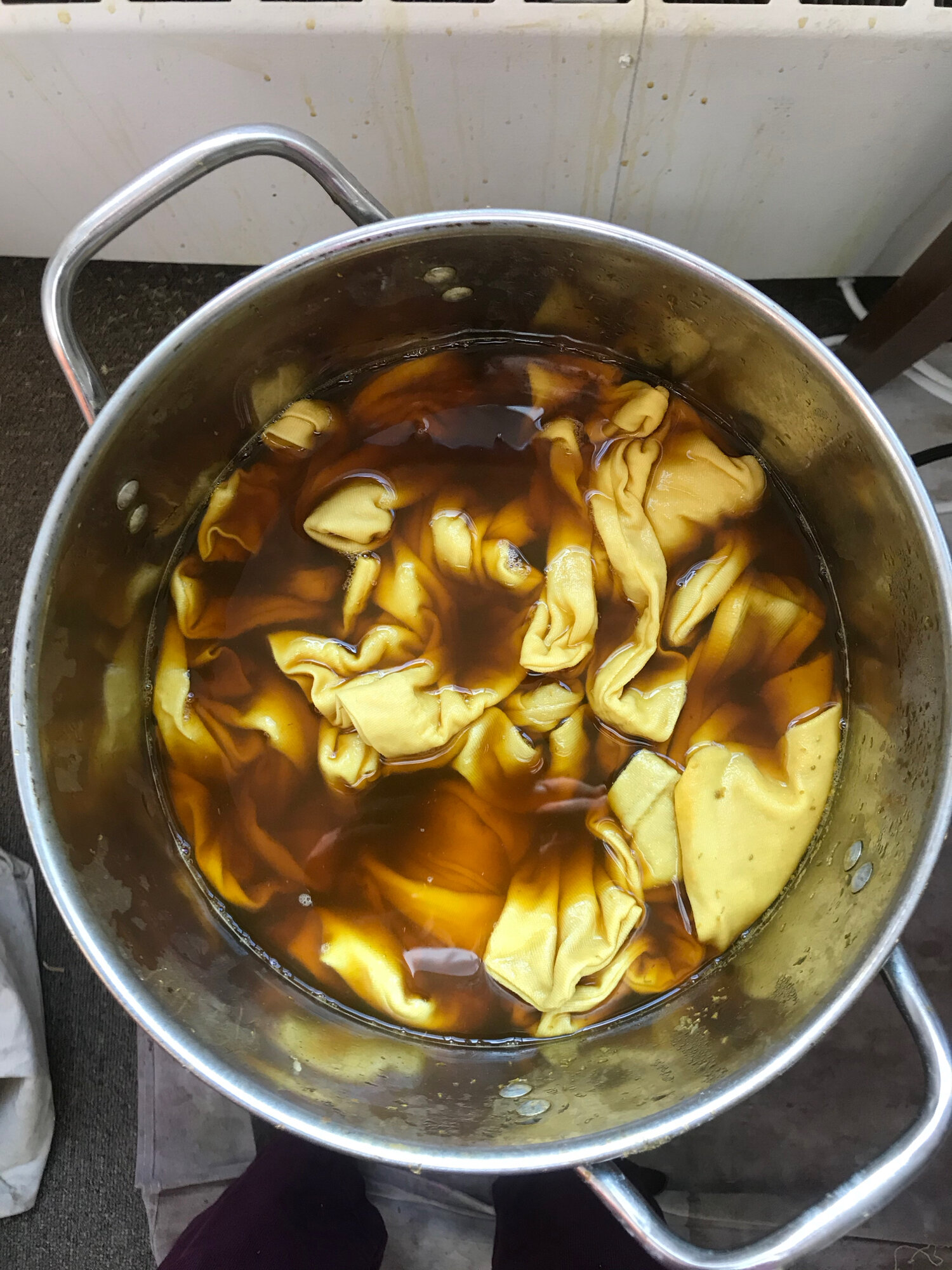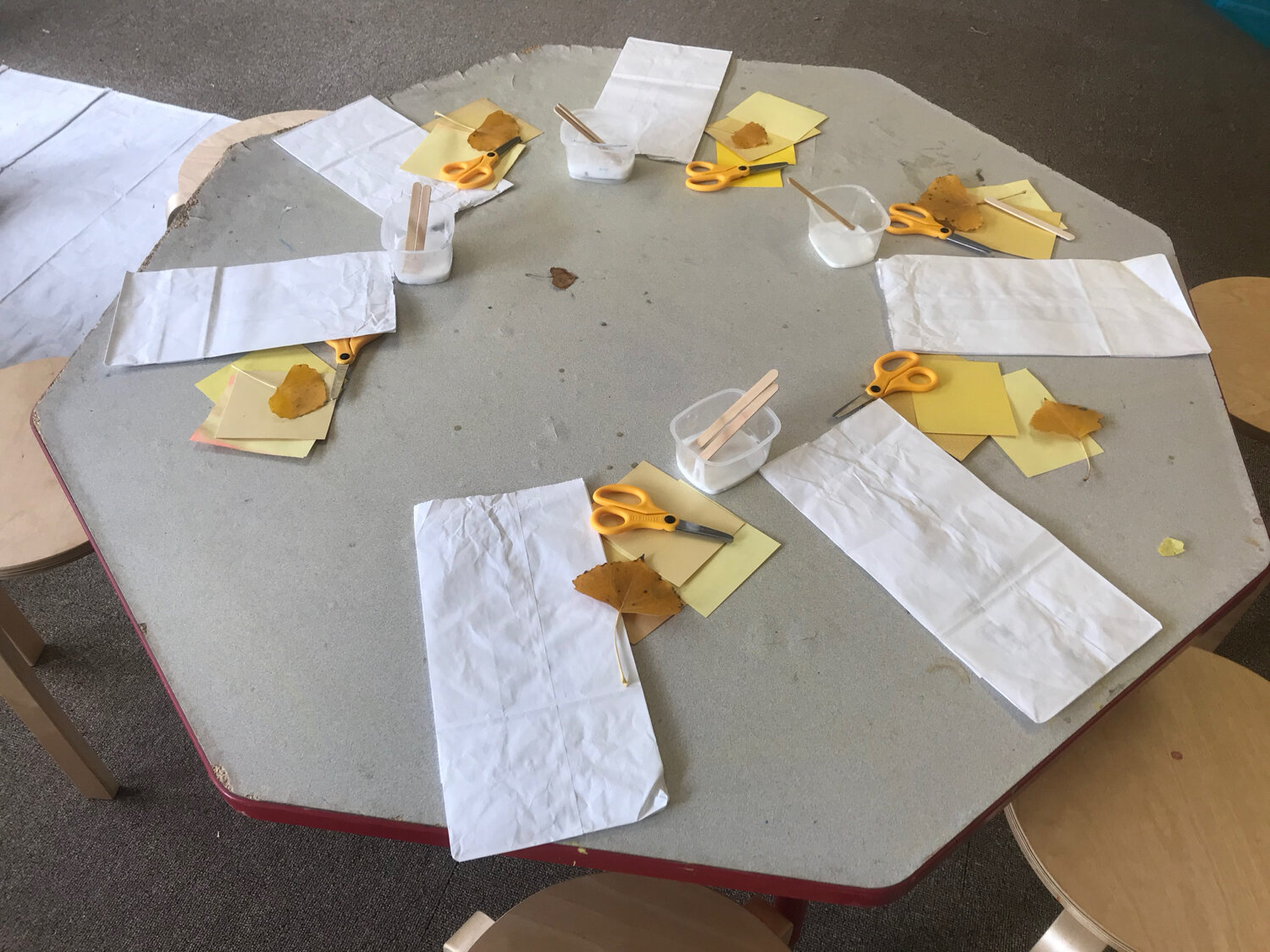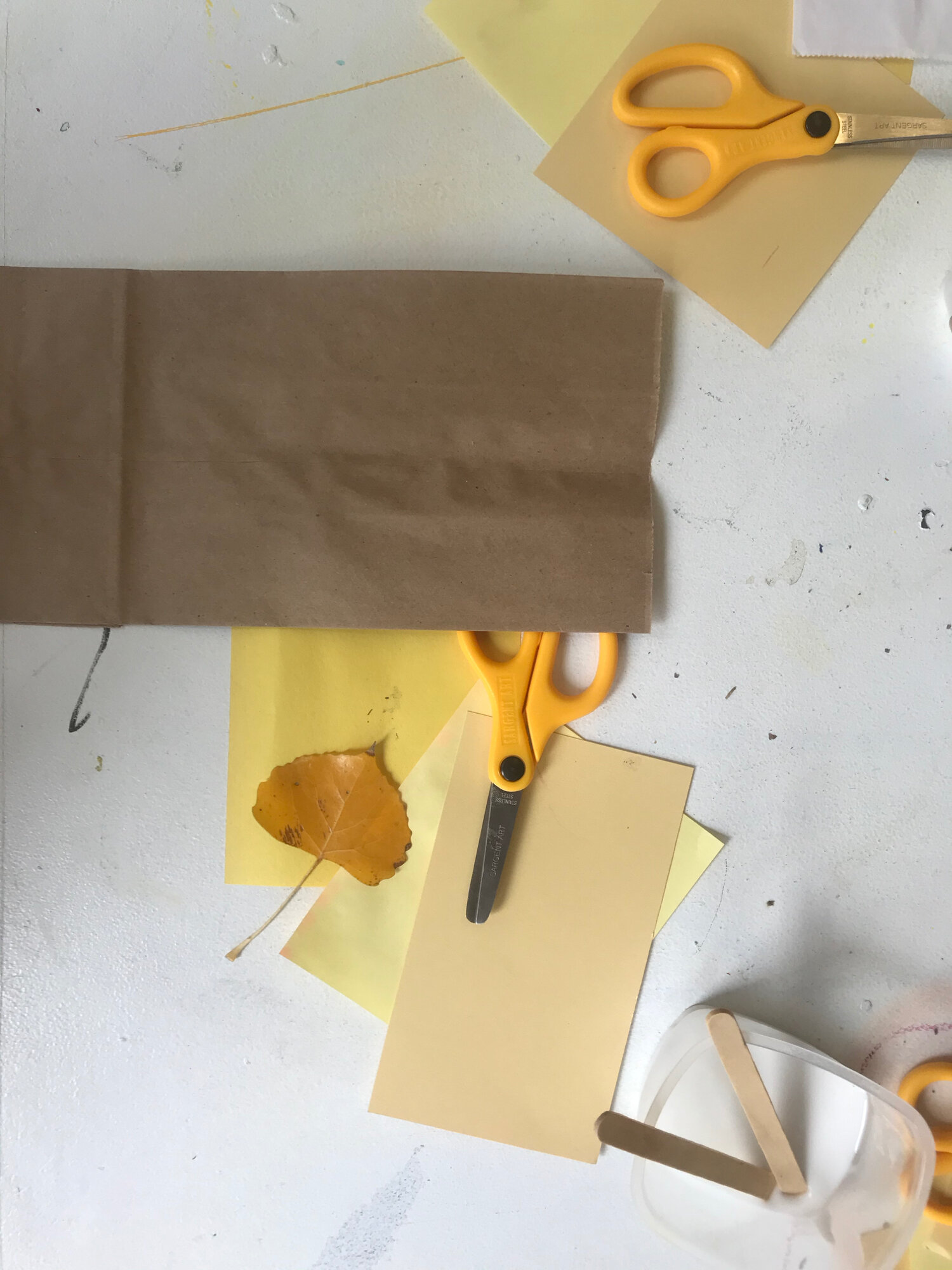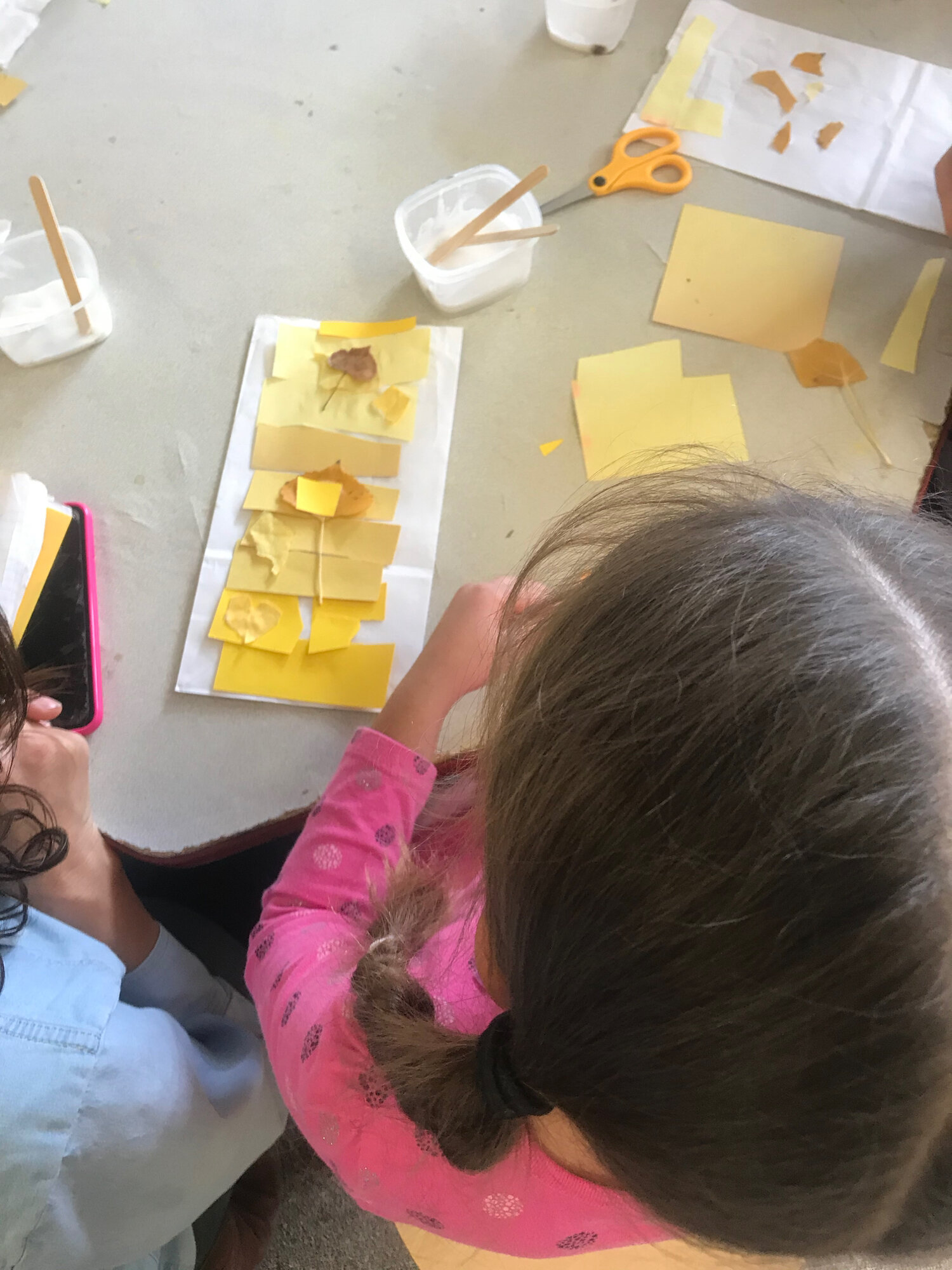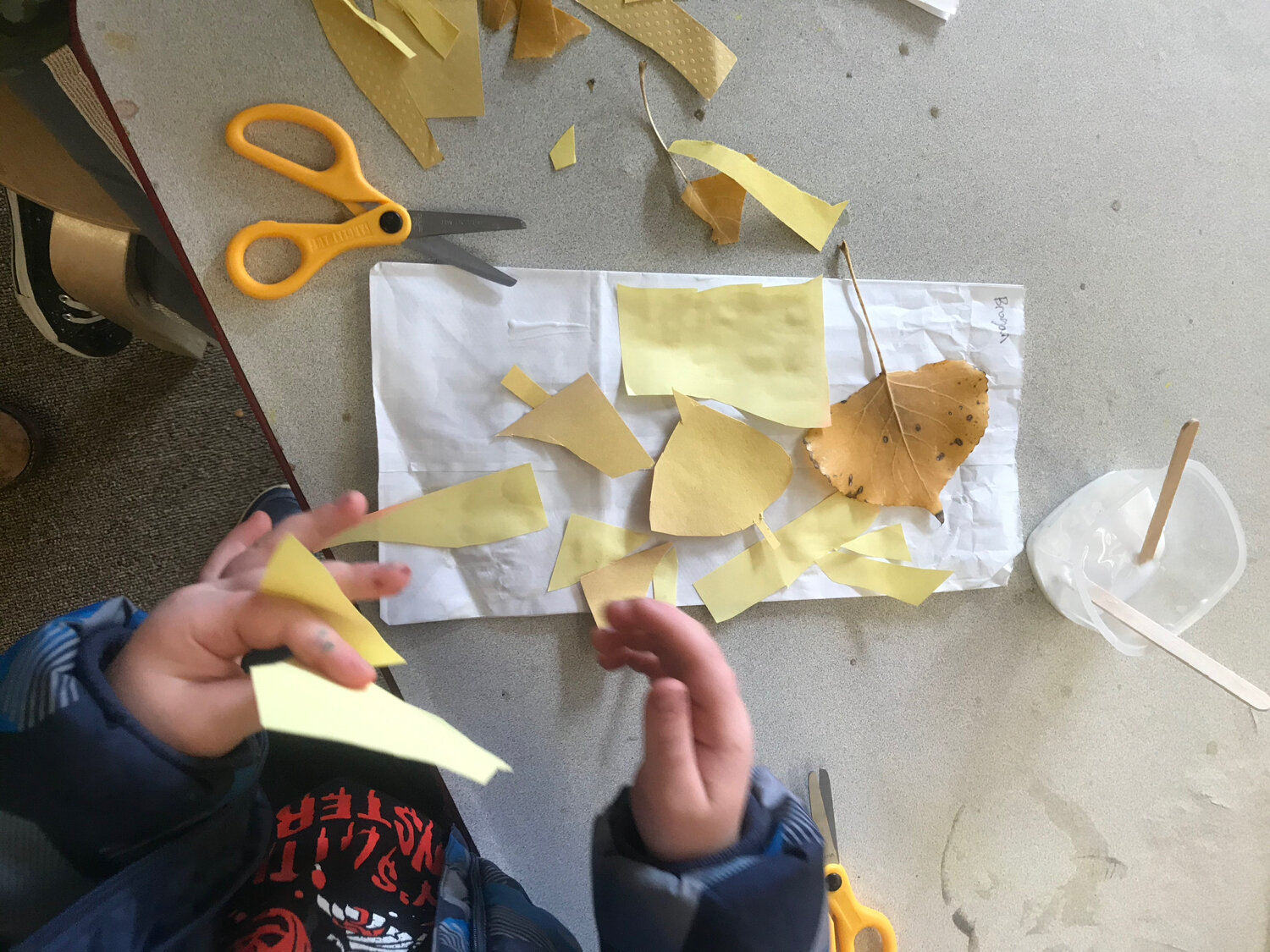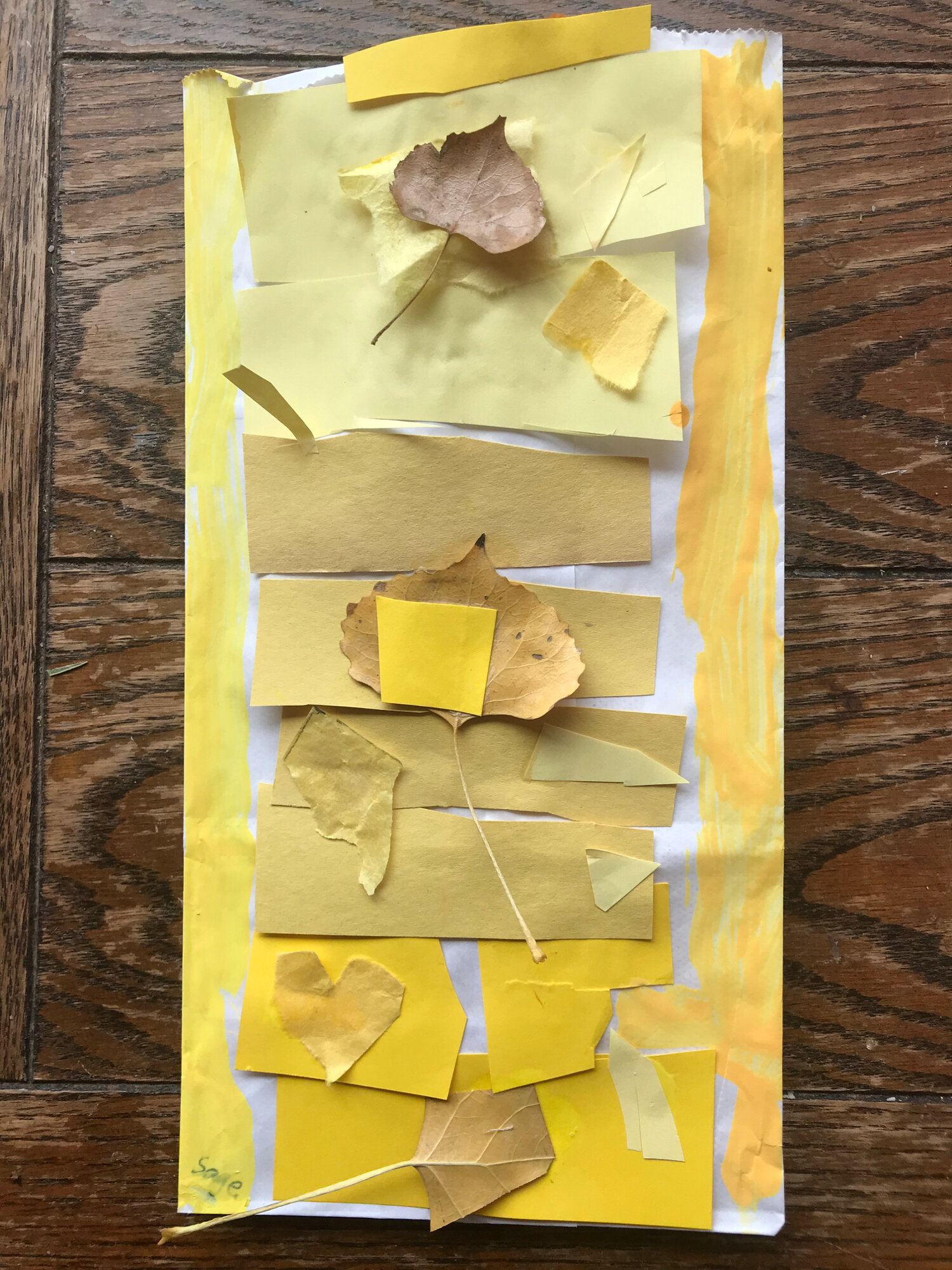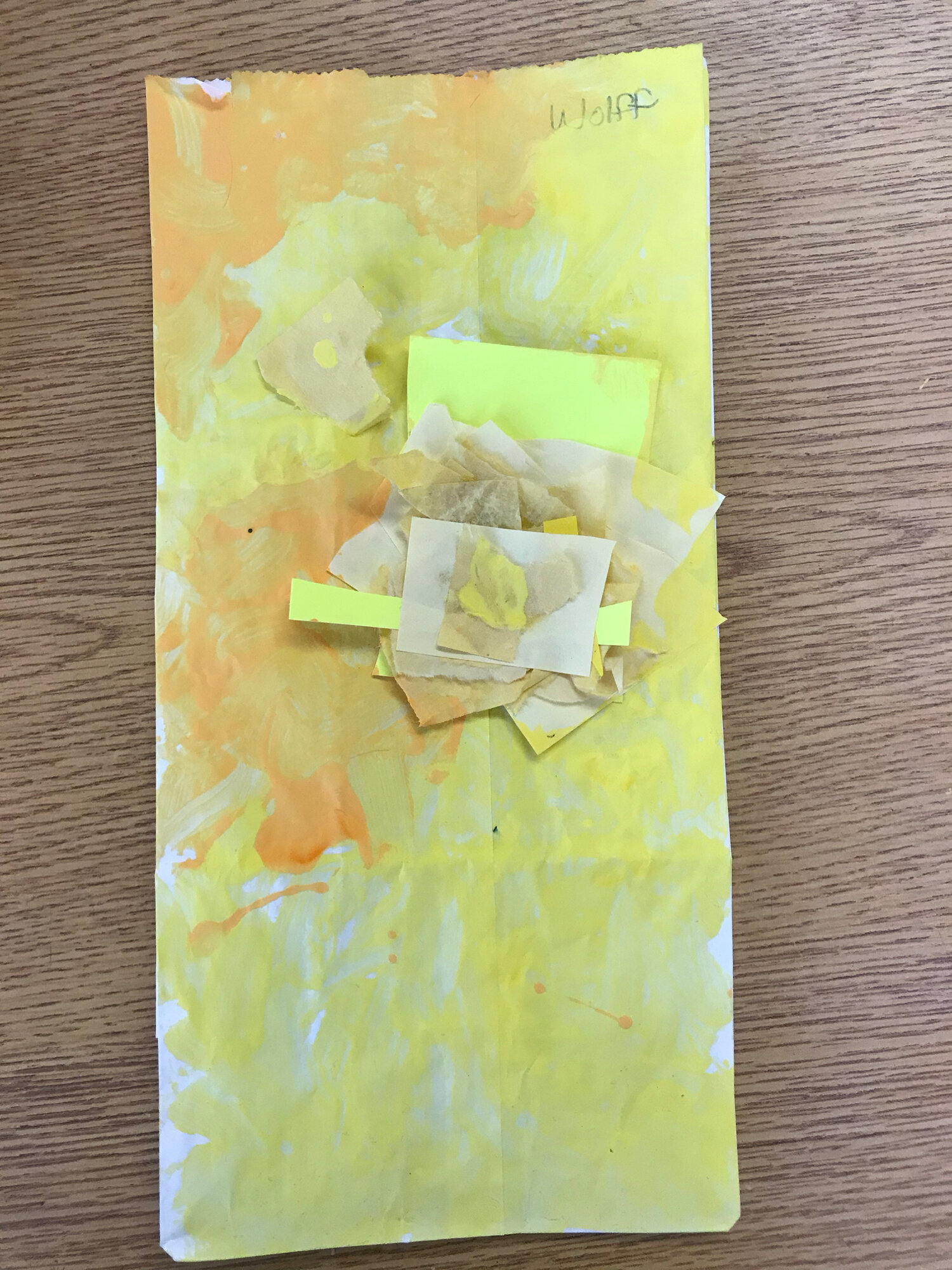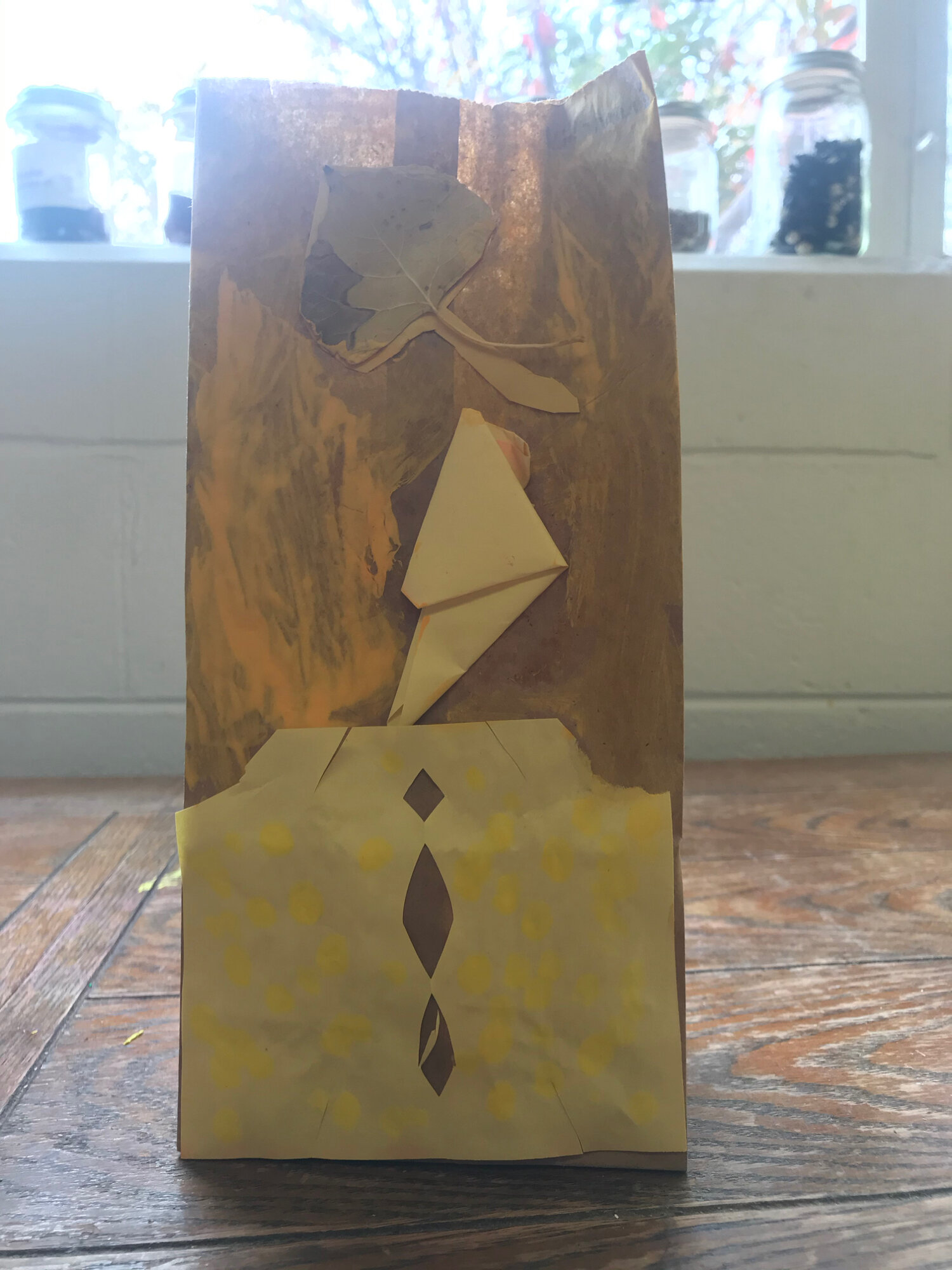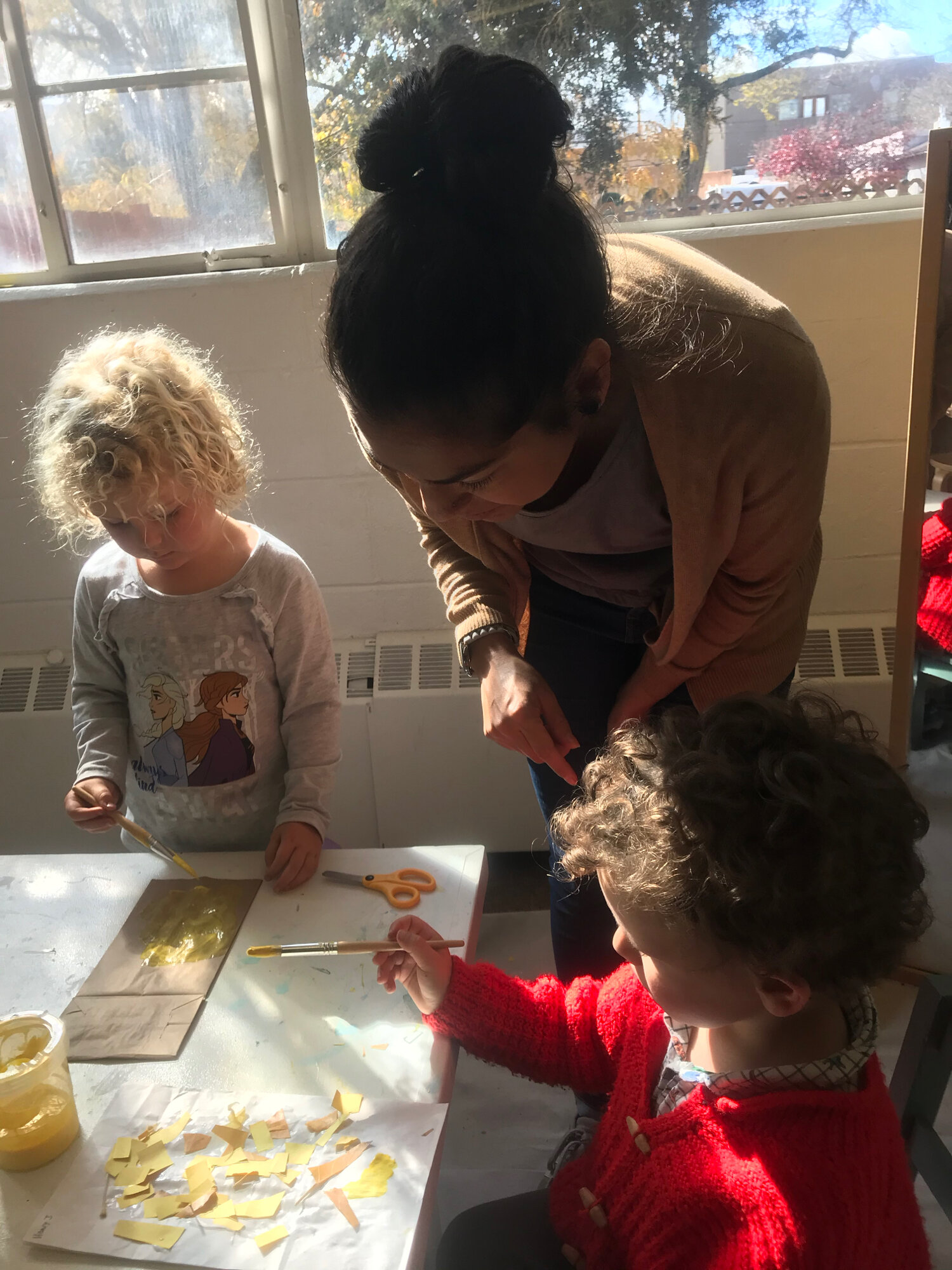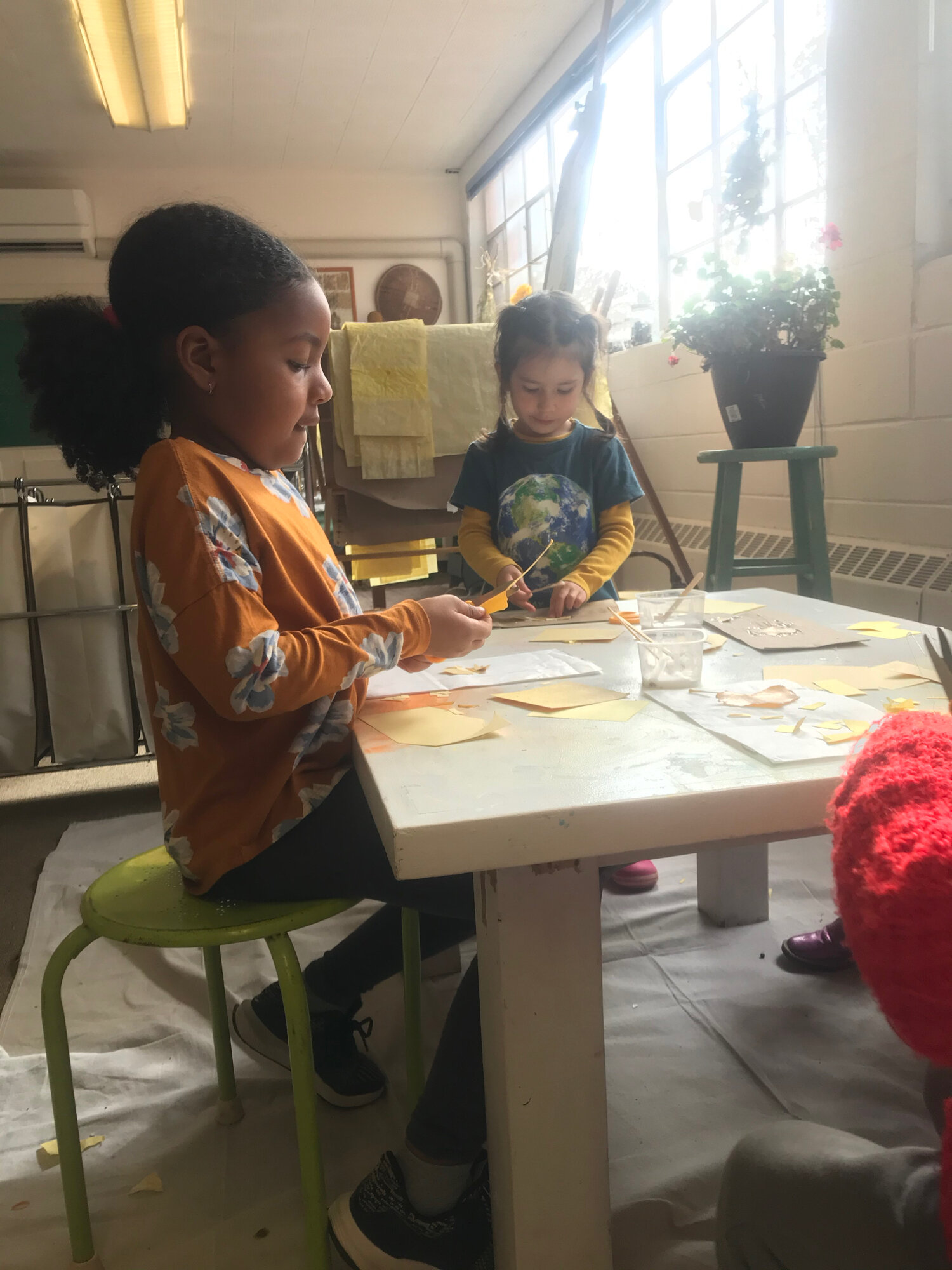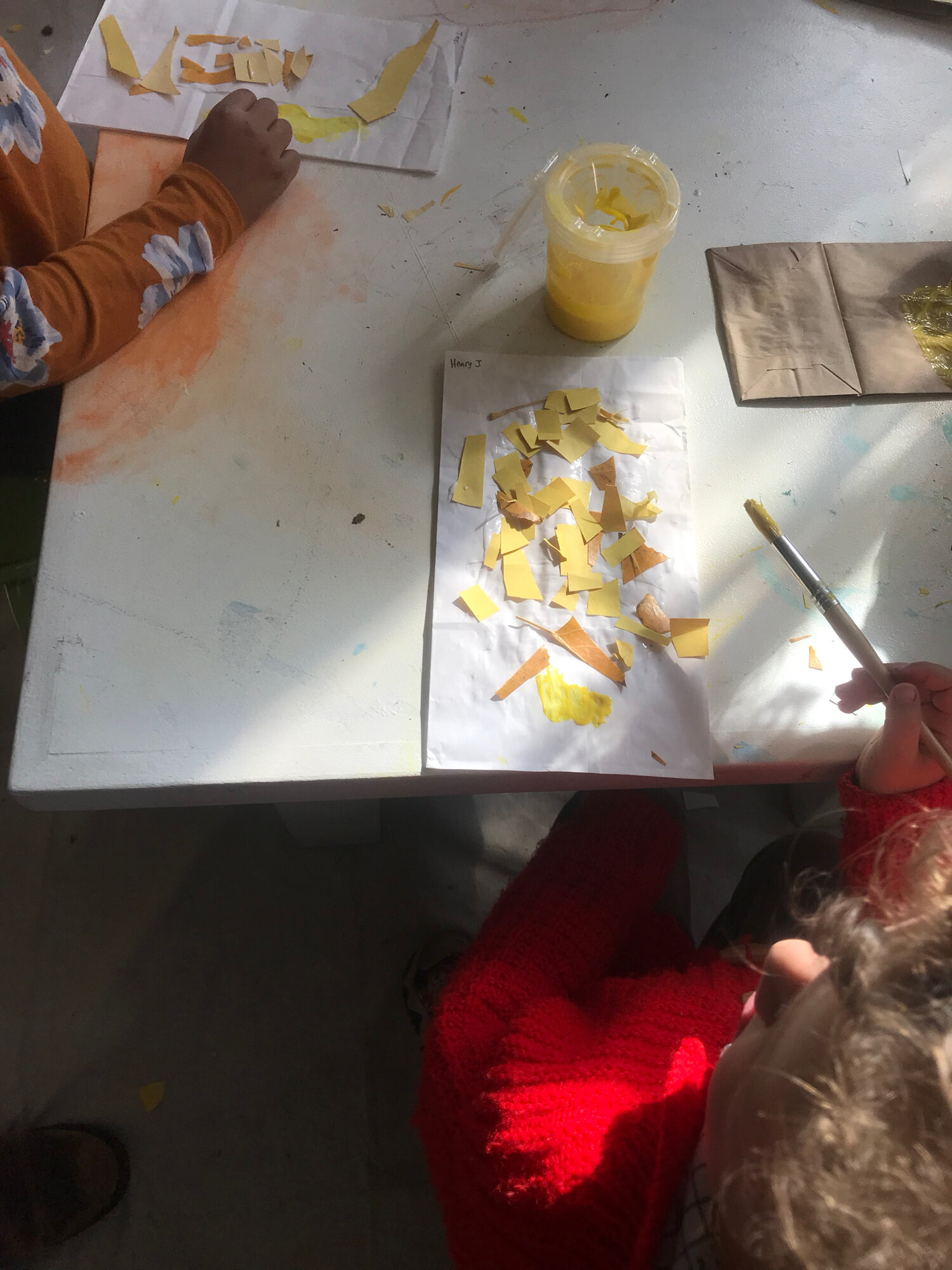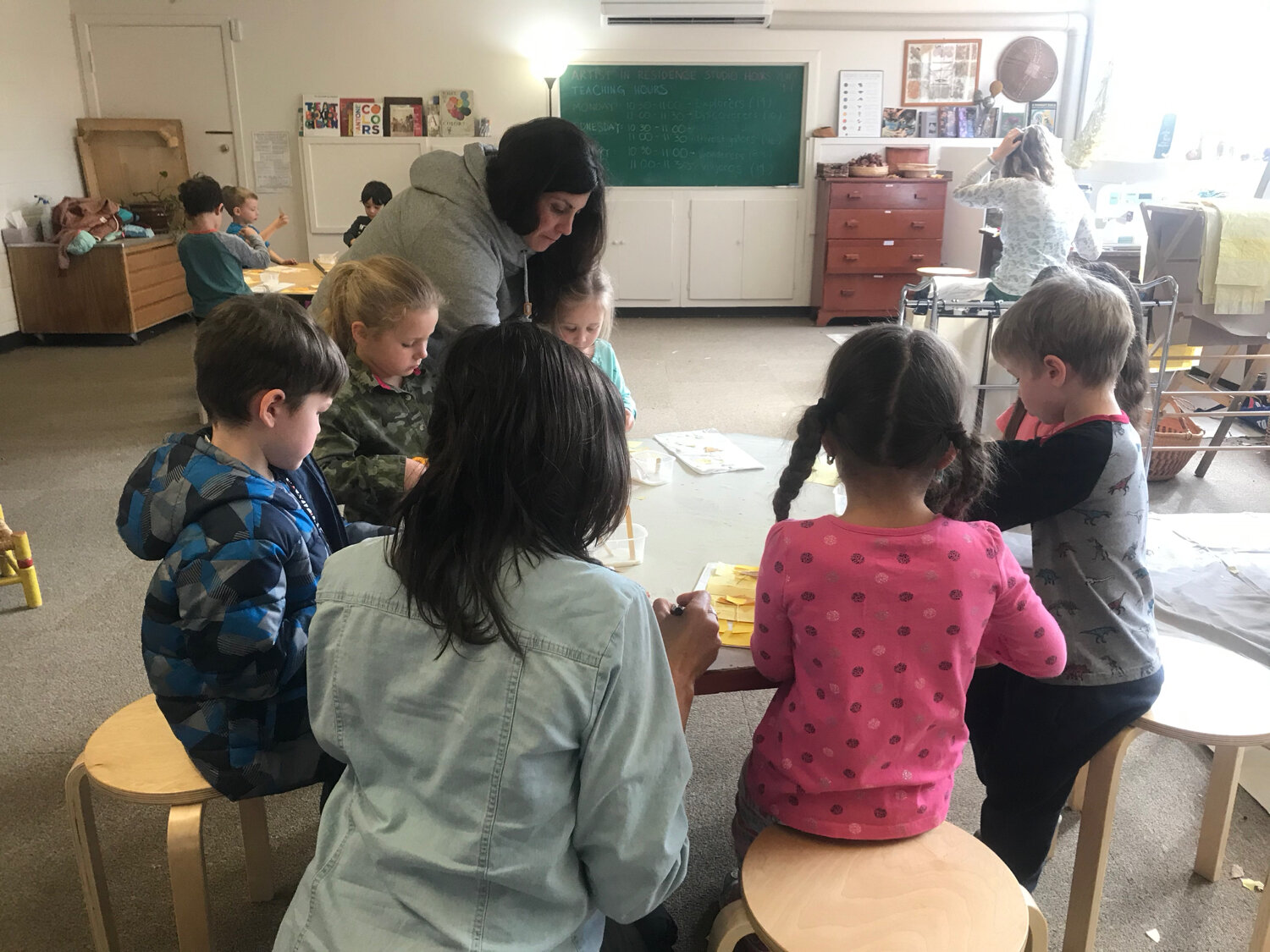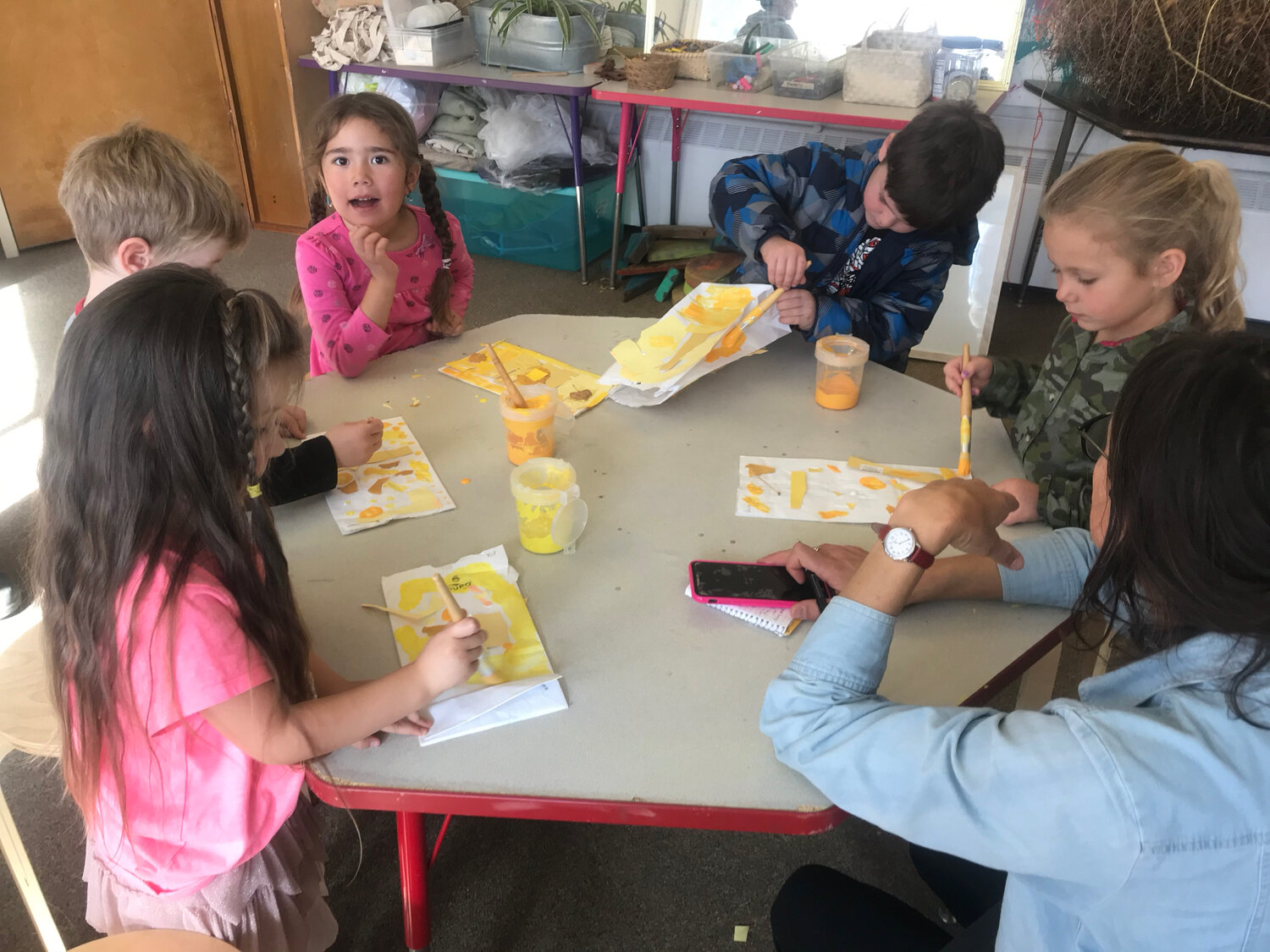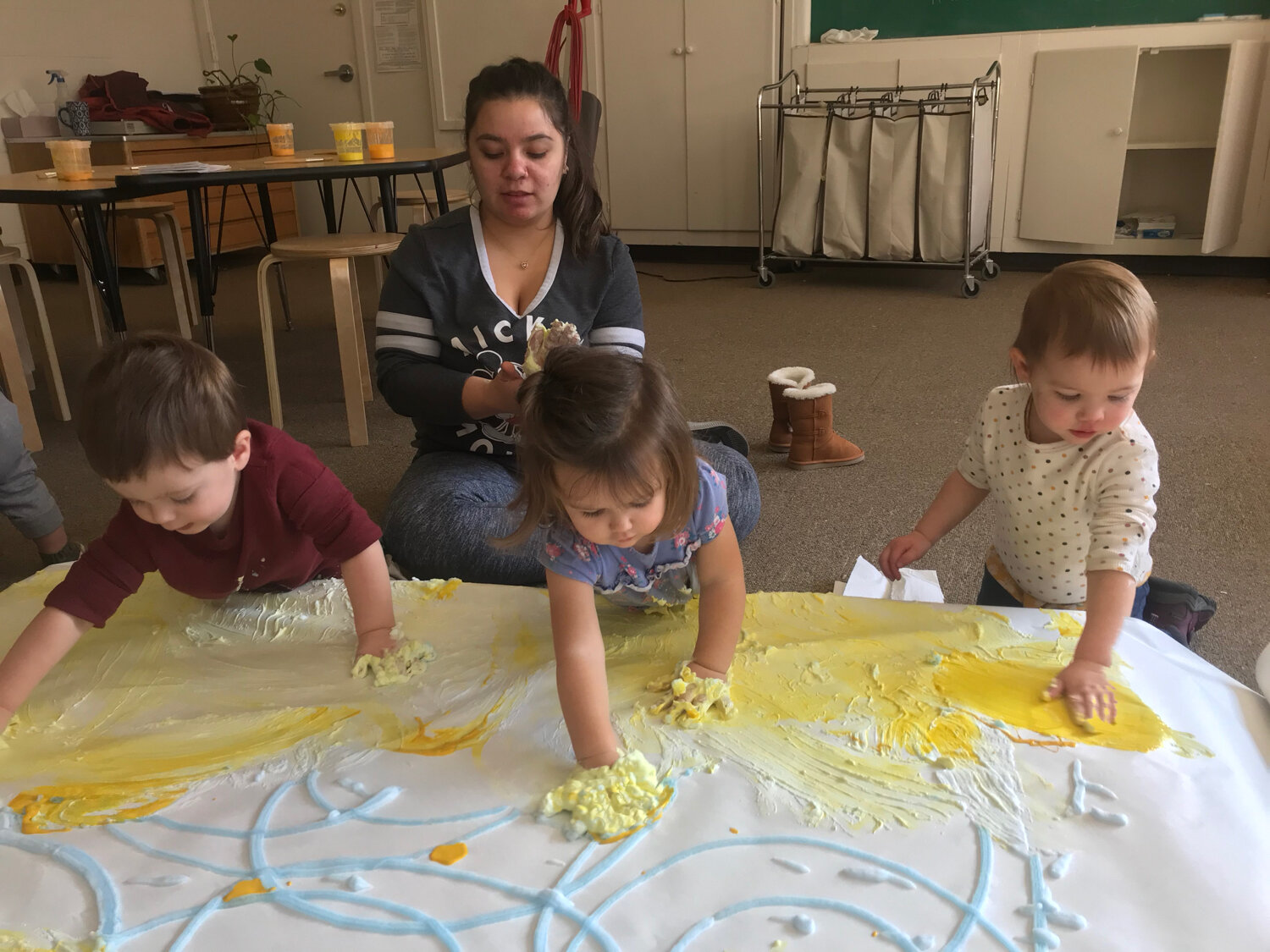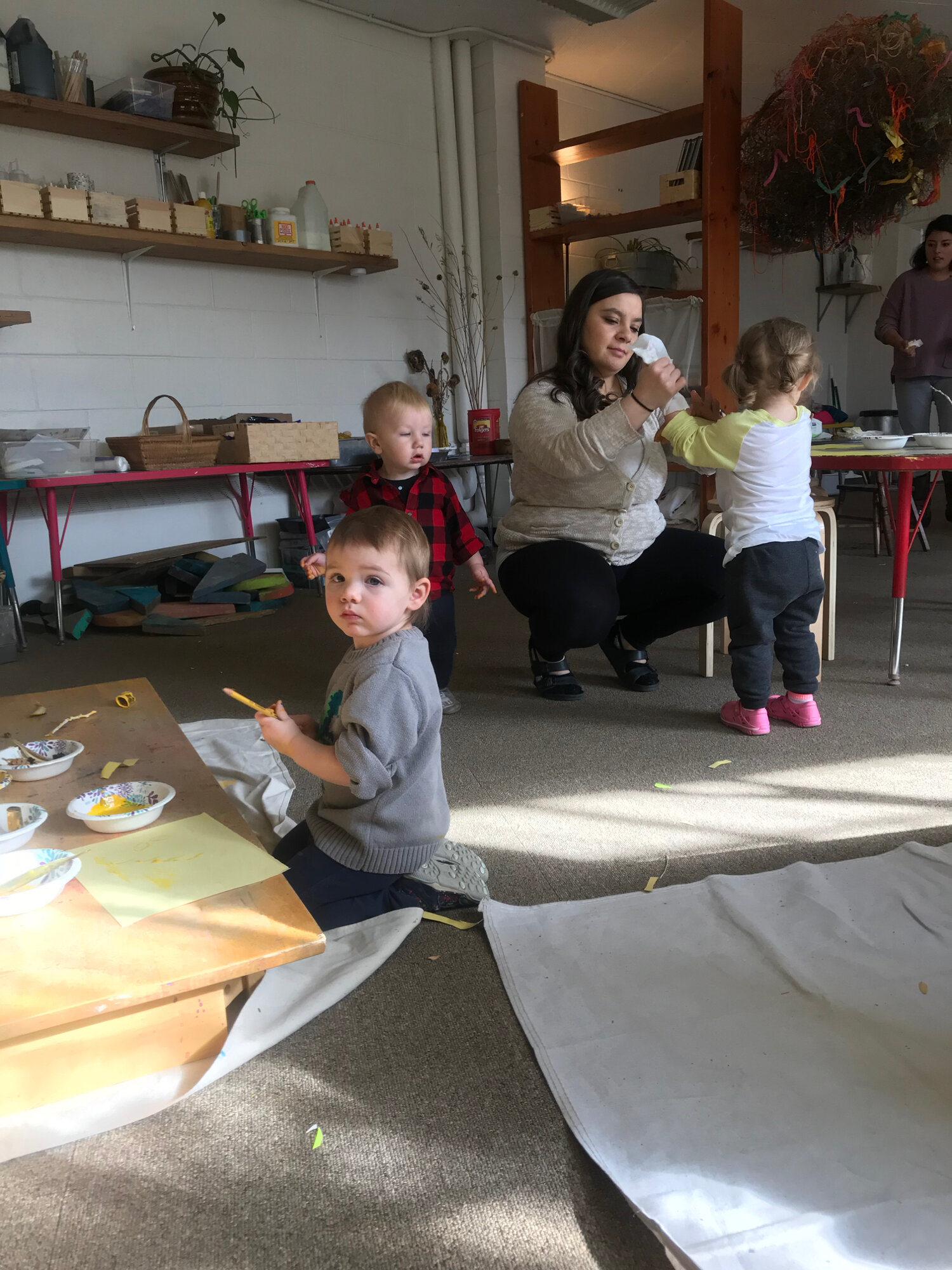“Play is the highest form of research.”
~Albert Einstein
Happy New Year! I am really excited to share with you one of my latest brain child projects. It has been an artist residency program at Elevation Preschool. The purpose of the residency is to bring to life the Reggio Emilia Pedagogy of the school, by creating a cultural exchange between artists and kids. The focus is creative development, child-centered, of course. The residency is also meant to support artists/mothers. (This includes queer family models, single mothers, non-mothers and new fatherhood all of whom are often times excluded from attending artist residency’s and are underrepresented in the art world).
The birth of this project (pun intended) came through various channels beginning with my previous experience in 2017-2018 participating in an Artist Residency in Motherhood, founded by artist Lenka Clayton. Lenka developed the residency as a way of debunking the myth that motherhood and art making are in opposition to one another. She created various conceptual frameworks, where mothers can continue making art while in the throws of domestic life. In doing so she built a thriving community where hundreds of artist/mothers could support one another meeting the many challenges, while engaging in a dedicated art practice and dialogue about it. How much more creative one can be at such an important stage of mother and child?!
Having had this powerful experience myself, after about a year of completing it, I realized I was once again feeling isolated in my domestic bubble and art making practice. Once I noted my source of loneliness (which is a symptom of both practices: at home and in the studio) I decided to change my situation. I decided to build my own community. The natural choice was the place where I go to drop off and pick up my son every morning. Right there, in that school, was already a large community of people. Very few of whom I knew, yet I could go and see whom I might get to know and perhaps be able to collaborate with.
What makes the location of a school so important, is my alignment with the Reggio Emilia Pedagogy. And it has been always my belief that play is the most beneficial experiential learning tool for children during early-childhood development at both school and home. Furthermore, in my own art practice, I embrace the philosophy that creativity comes through the process of inquiry, exploration and play. Ultimately, play is a site of a perfect alignment of intuitions and values.
This is the first year of what will be an ongoing residency at Elevation (changing artists every year). I am the first artist-in-resident and I have spent some time figuring out all the specifics of the program’s nature and structure. The goals I set for myself are to commit myself to exploring botanical colors extracted from seasonal and local plants, as well as from other outside sources. Diving deeply into the science of mordanting, which is a dye fixative used to set, or bind dyes on fabrics or tissue, I have set out to learn. I have learned how to maintain lightfastness, wash fastness, as well as shifting one plant color to another- within it’s color family. I volunteered an hour every Monday, Wednesday and Friday, when I worked with the kids right there in my studio, inviting them into my practice. I also have invited parents in to participate in the process. I did make direct requests for collected plant material, or to come and visit me in the studio to talk to me about their own interests. By doing so, I have left open the possibility for further collaboration and expanding the community between children and adults.
Of the parents who have come in to collaborate, I have been working closely with Rachel Zulevi, zero waste enthusiast and founder of WasteLess Life NM. You can join her community by visiting her site WasteLess Life NM on both instagram and facebook. What Rachel has been doing is gathering donations from thrift-a-lot and coming to the studio every Wednesday to sharpen her sewing skills (which she only recently took on as a new practice). She has been creating different size and style of bags out of used shirts, which I had been dying in various shades of yellow. The bags have multiple purposes such as snack bags, lunch bags, bulk grocery bags, stuff sacks, gift bags, or as one of the kids said, “collection bags!” (Does anyone sense a business here?)
Other future collaborators who I have spoken with are Art Therapist and Psychologist, Yulia Hartman, Artist, Activist and Adjunct Professor of Art and Ecology at UNM, Asha Canalos, as well as Artist and Zen practitioner, David D’Agostino. I have met with each of them to discuss ideas of plants, art and non-aggression, as a way of healing. I will discuss each conversation more in depth in later posts, but wanted to at least mention these exciting colleagues, brilliant lights in their field. And, of course, I will be sharing more about our ideas and projects we have percolating in the near future.
Regarding the goals of the residency, which of those has really happened in the last three months? Well, the first couple weeks were spent moving materials from my home studio and kitchen into the newly acquired art room space by Elevation. That has entailed sorting through old materials which lingered from a previously existing art space. The it was setting up the room and deciding with teachers and the director Liz Dolph, how they wanted the room to function for them. Here are some images of the working space currently.
Once the space was sorted and organized, I began my exploration of the color YELLOW through botanical color. It was October here in New Mexico, and the Native plant Rabbit Brush, also known as Chamisa, was in full bloom. These plants, as you know, grow in abundance by roadsides near the foothills. I harvested some of them, brought them back to the studio and boiled them for a few hours. Then I added aluminum acetate as a mordant and explored dying cotton canvas and mulberry paper. I followed my Chamisa experiments with another local plant, traditionally used by Native Americans: Oregon Grape, which gave a much more earthy pale yellow. Those were followed by Marigold, Pomegranate and Chamomile. Here are some photos from that process (in order as listed).
Then in mid-October through the end of December, I began working with the kids. This part took a lot of loops and turns. I found myself with 5 classes, starting from the age of one through five. And although I had raised kids through all these years and made art with them all along, I quickly realized that having a whole room full of them was well, humbling. Kids at play all along make you realize your physical limits and potential of your idea to let play and guide at the same time: it is a challenge, but a rewarding one.
Furthermore, I should mention I have twelve years of previous teaching experience in art, all the way from teens to adults, with seven years experience teaching at the college level. Nonetheless, I was not right away prepared for ways to bring such young kids into my process. One challenge was their young age and how to involve them without having a full understanding of their various motor skills. Two, not knowing how to manage a room full of kids with short attention spans. Three, not yet having a full understanding of my own process and how to involve them into it.
I ended up focusing on our color YELLOW. I tried a number of projects that explored what YELLOW was to them through various natural and pre-made materials. Inspiration to do so was drawn from both the Reggio Emilia Pedagogy combined with the 20th Century Bauhaus pedagogy, both of whom emphasized the phenomena by themselves as a catalyst for exploration of materials and form. In other words, just as in the Bauhaus's foundational courses, I ask the kids to try to show in their works what YELLOW may be in difference to, say, BLACK or what WOOD may be in difference to METAL. They will ultimately come up with basic responses that in one way or other highlight light vs. dark, or soft vs. hard.
Ultimately, I am not sure that my projects were moving children in this direction. Once again, it was humbling and eye opening as to how valuable our early education teachers are! Looking for a solution to this problem, Liz Dolph, the director of Elevation and another one of the teachers Rose Carmona (who has been working, exploring and reflecting on the field of early childhood for 15 years now) discussed the idea that instead of me teaching classes to the kids: I will work in my studio with a few of the kids from the class coming in. All the while, the others are busy working in different areas of the room where Rose will set up prompts for them. This will bring us back to the original idea of involving the kids in my process of plant dying and to collaborate with them. You can sense here, that I feel excited about this, as it truly brings me back to my original idea which was to involve the kids in my process and have them almost be a medium for my creativity! I will keep you posted on how the project goes after the next six weeks, which will begin again in January.
Finally, I would like to end this post with an image and short description of the piece which I made out of the process of working with Yellow. Focusing on the subtle shift of Yellow and the Catenary Curve, I made a 48” piece which I think about as a deconstructed Painting. Utilizing the painters frame as a foundation I hung the dyed canvas I had torn into strips and attached them to the edges of the frame with brass nails. Behind the hanging fabric and frame, I glued a collage that was made using 3” x 8” rectangles, to construct a catenary arch in contrast to the hanging catenary canvas pieces. Last but not least, I leave you here with the question, how does the color yellow make you feel? Any different from the kids’ feeling, what do you think?
